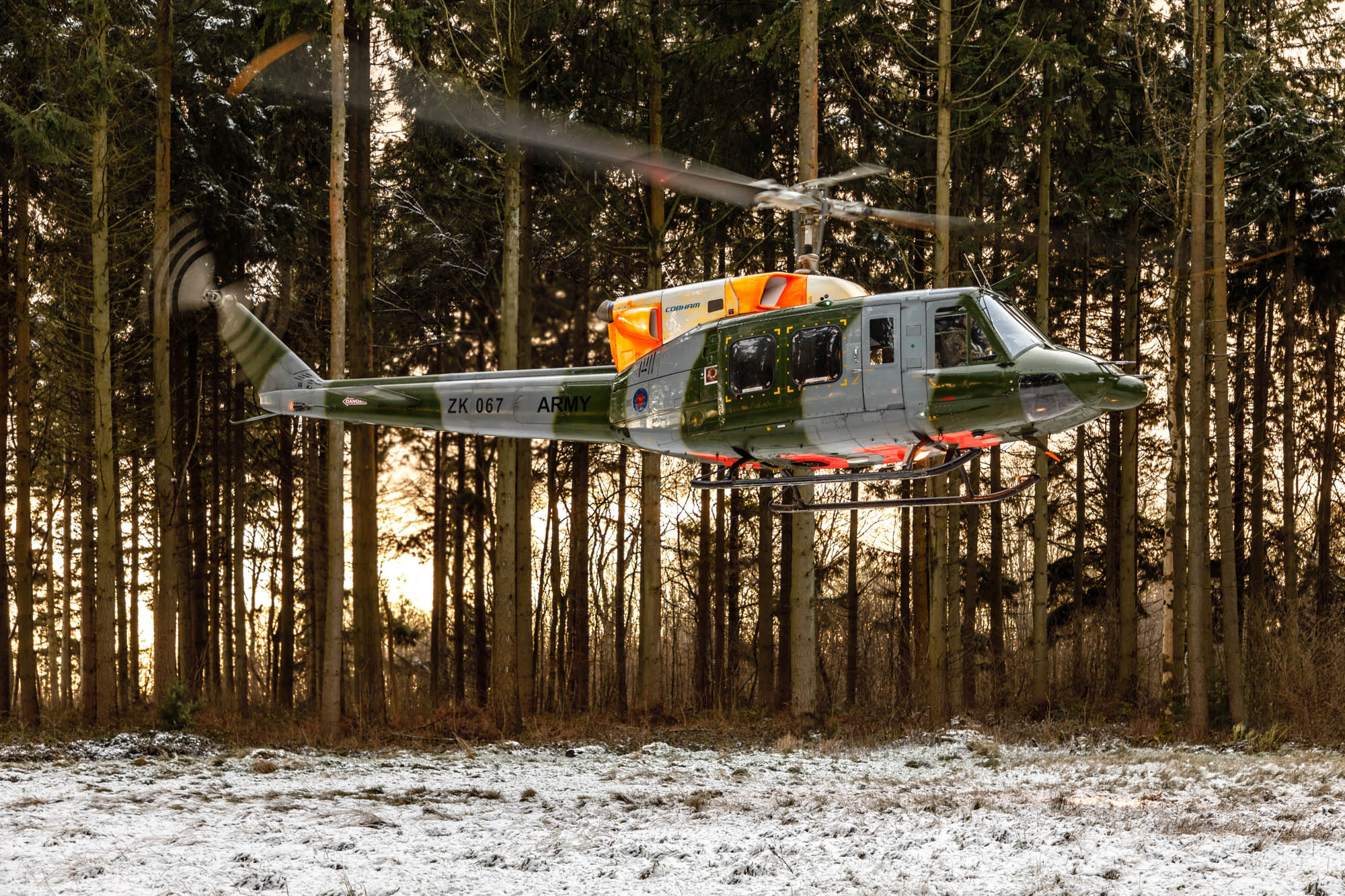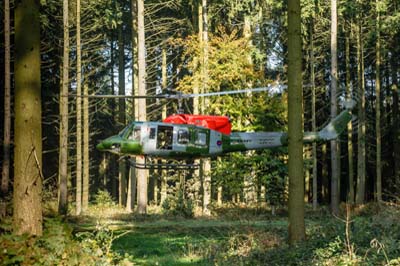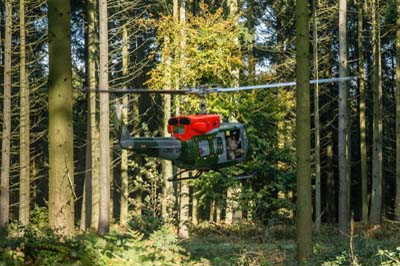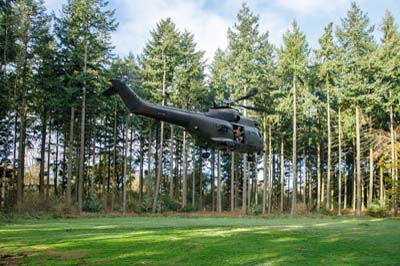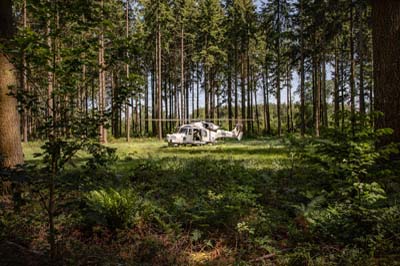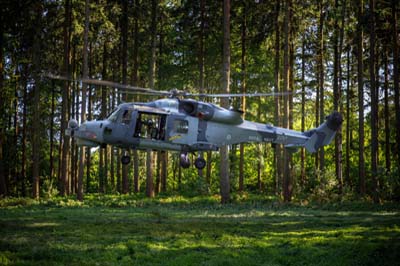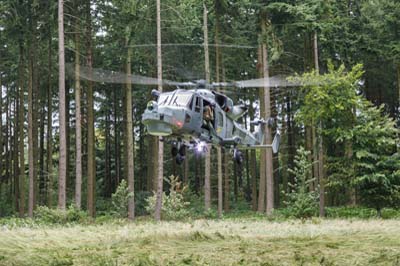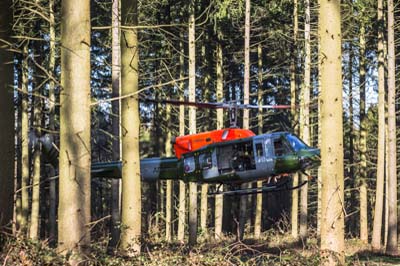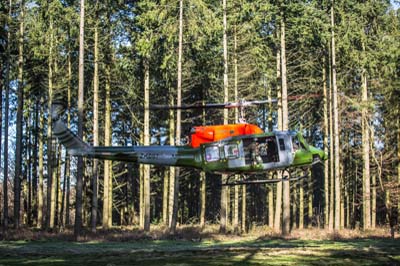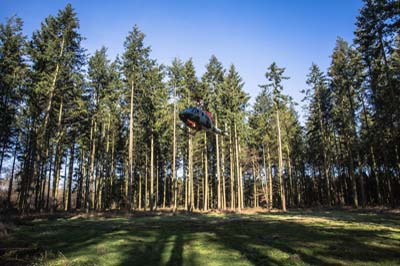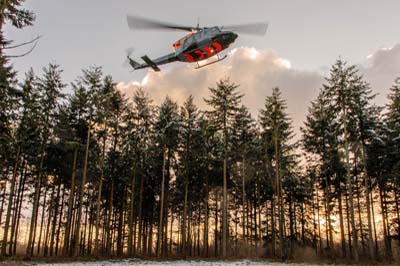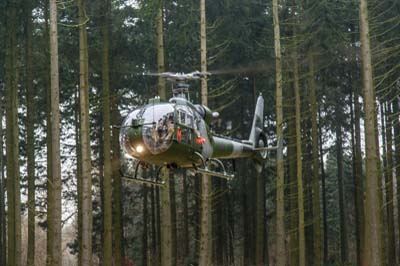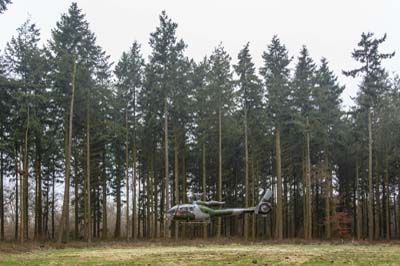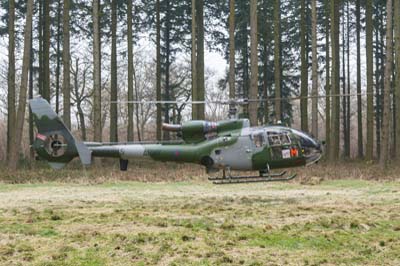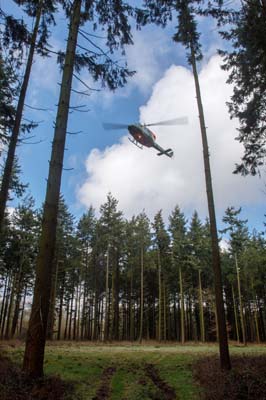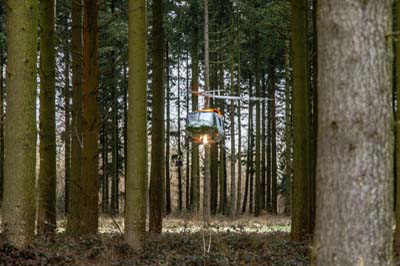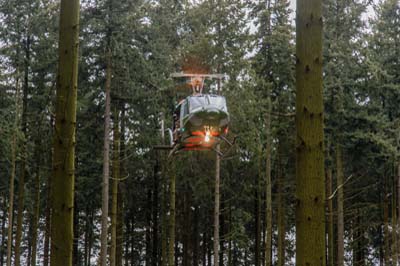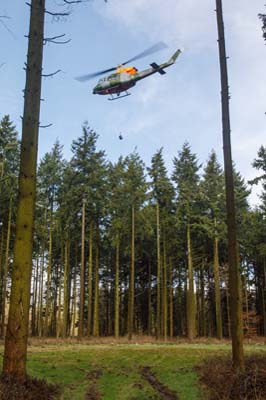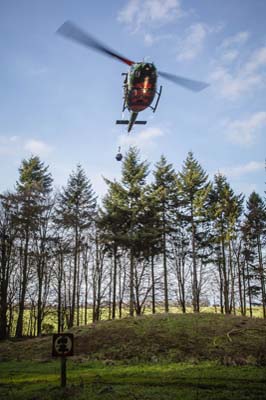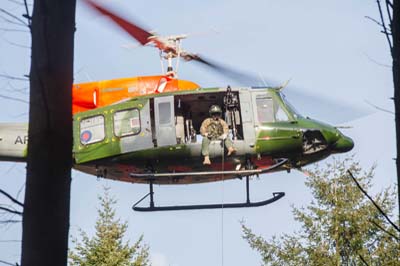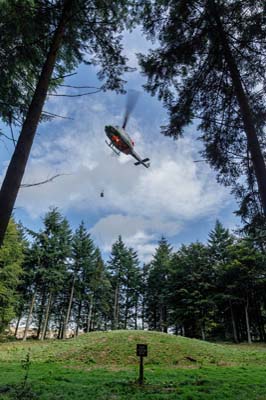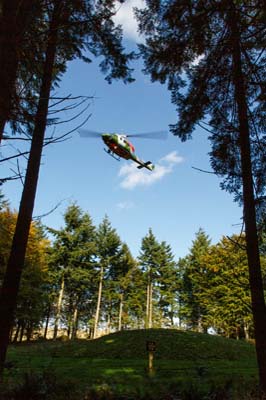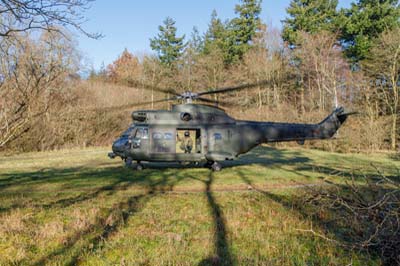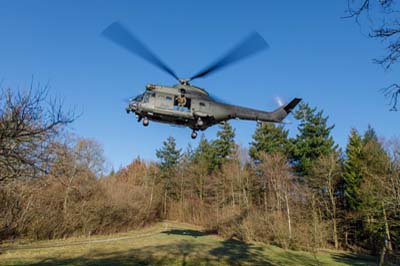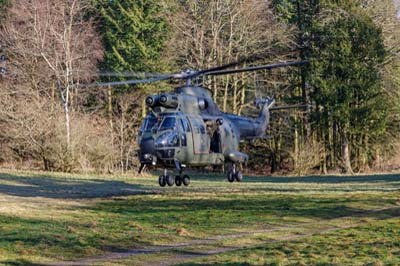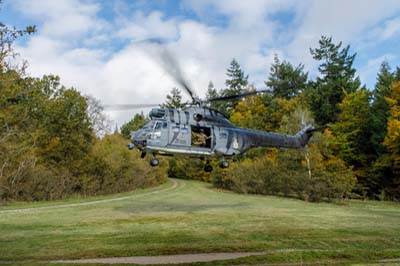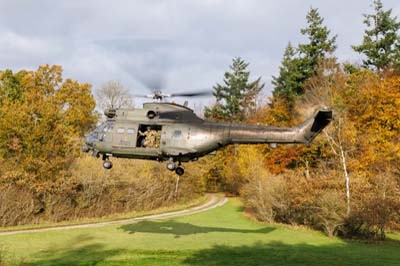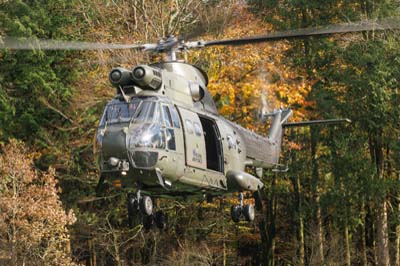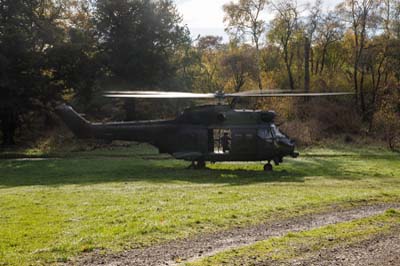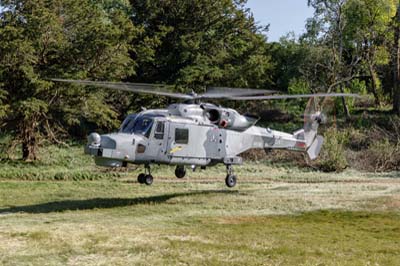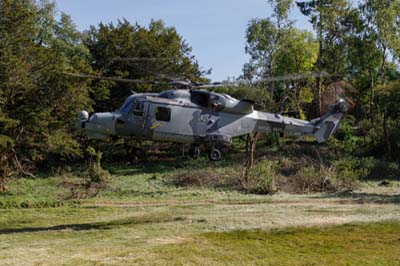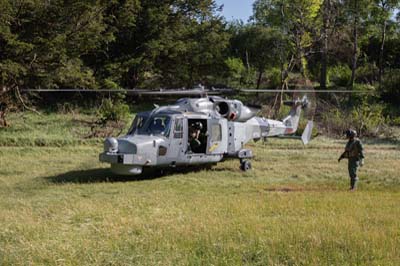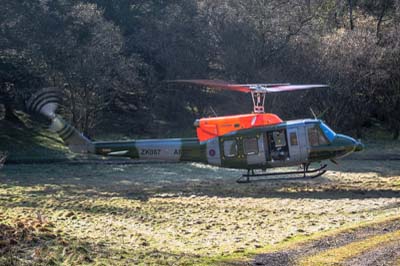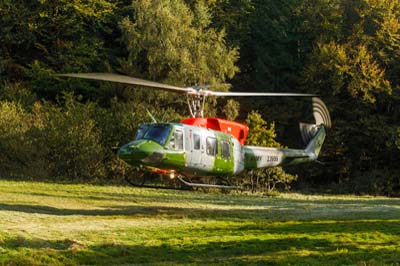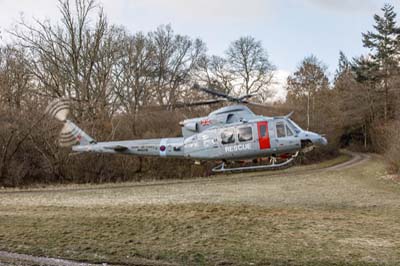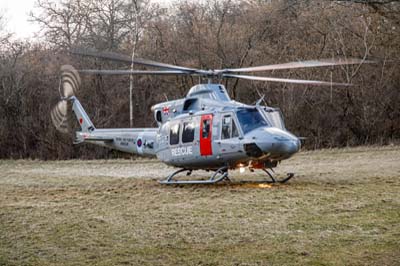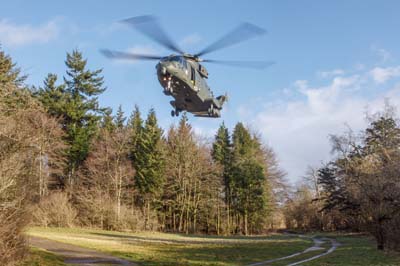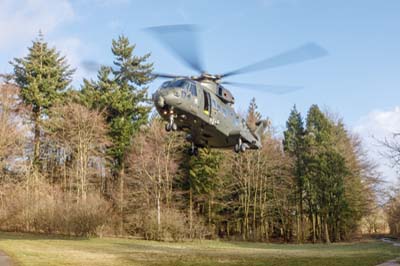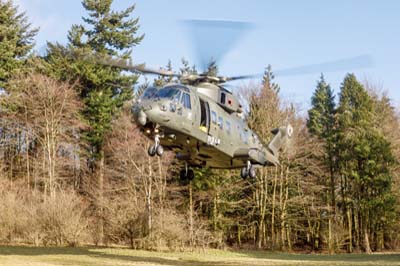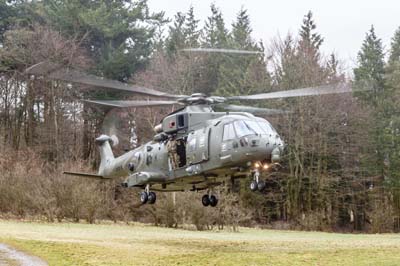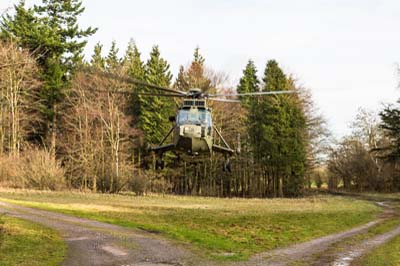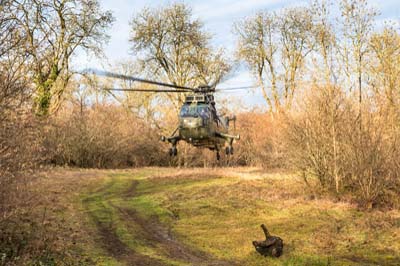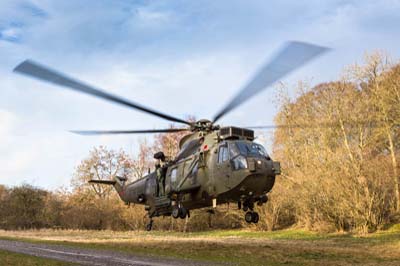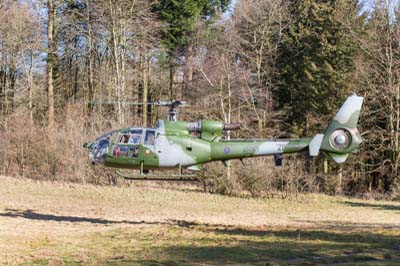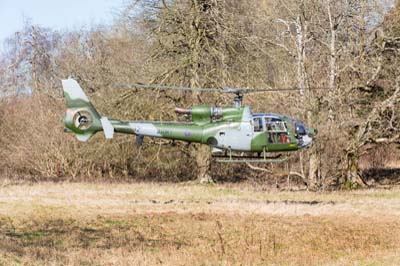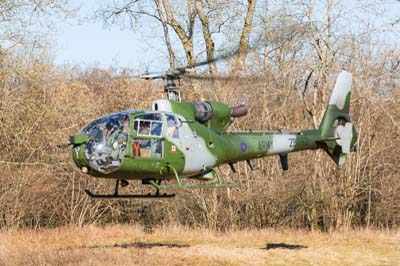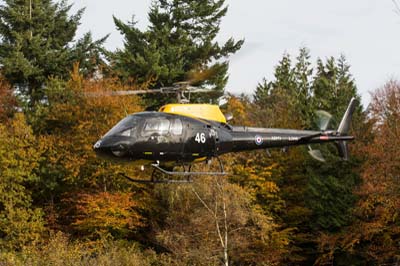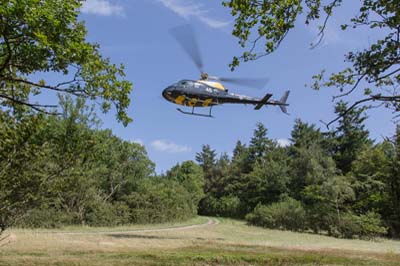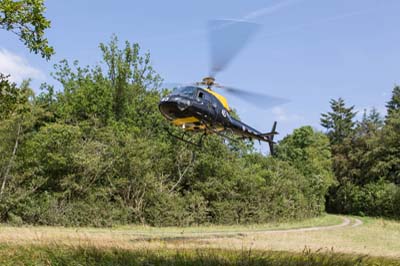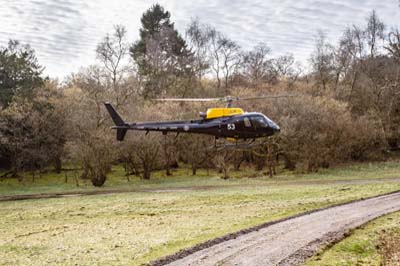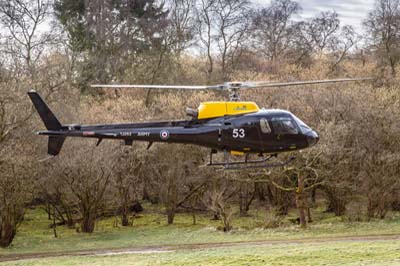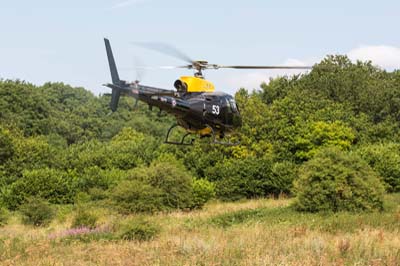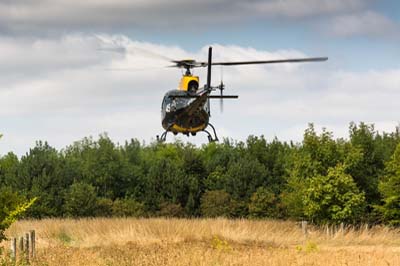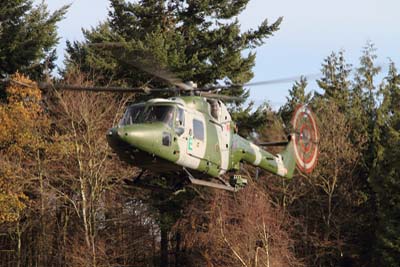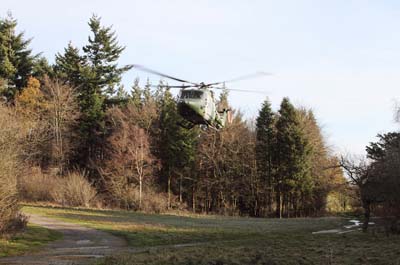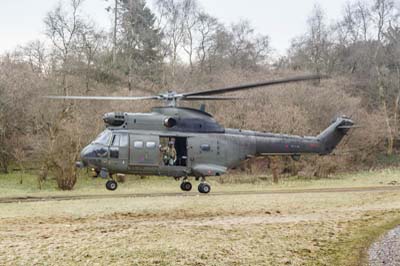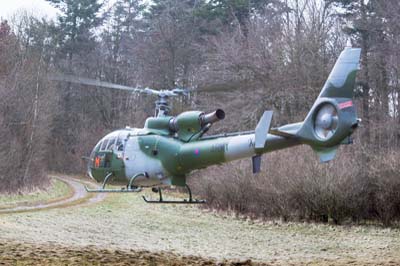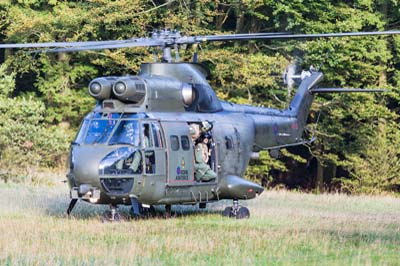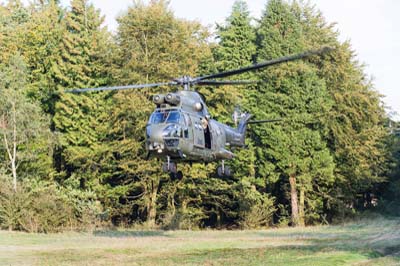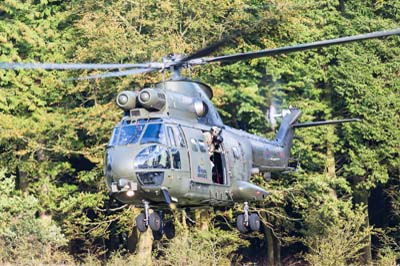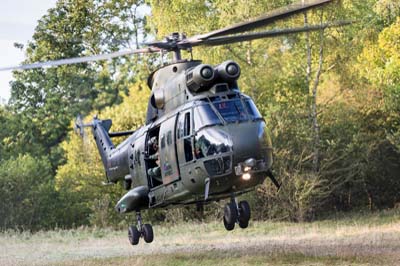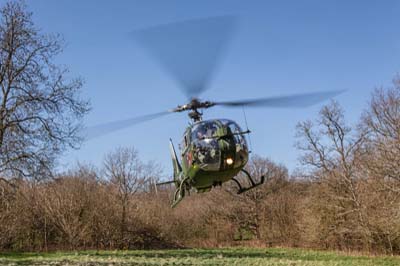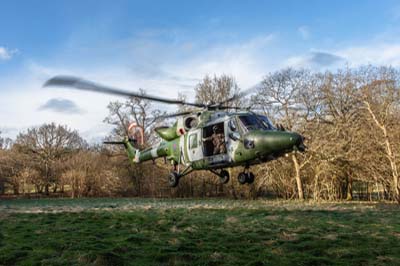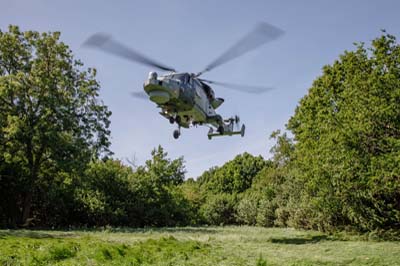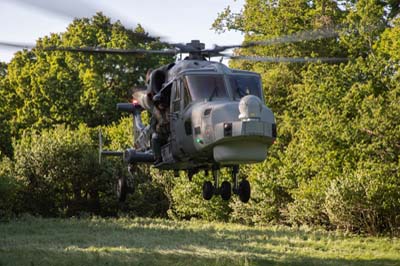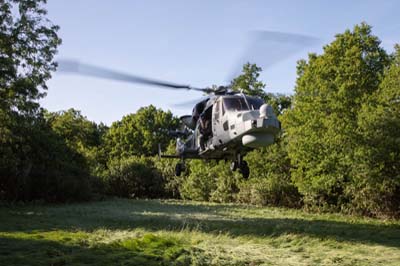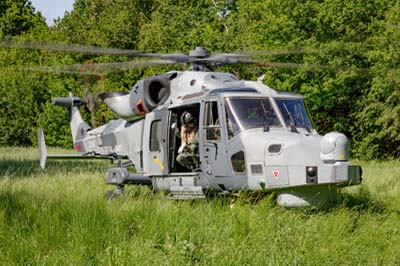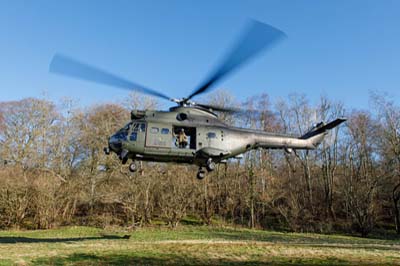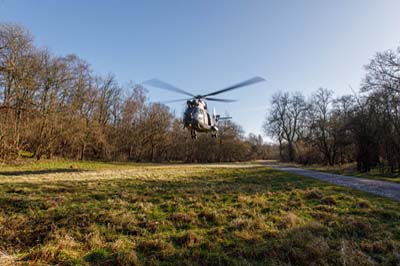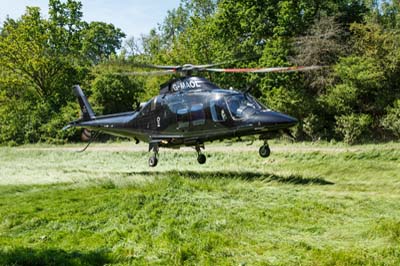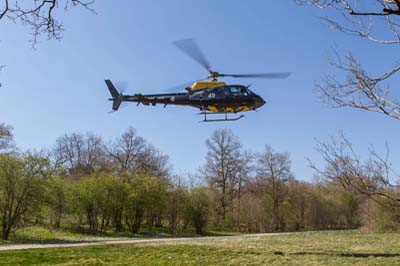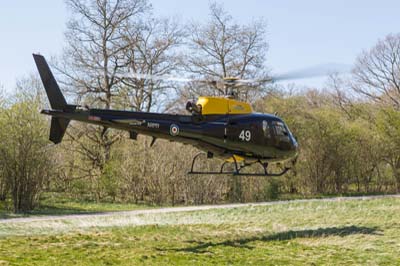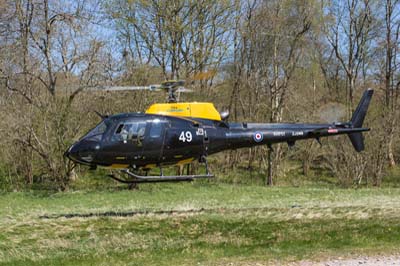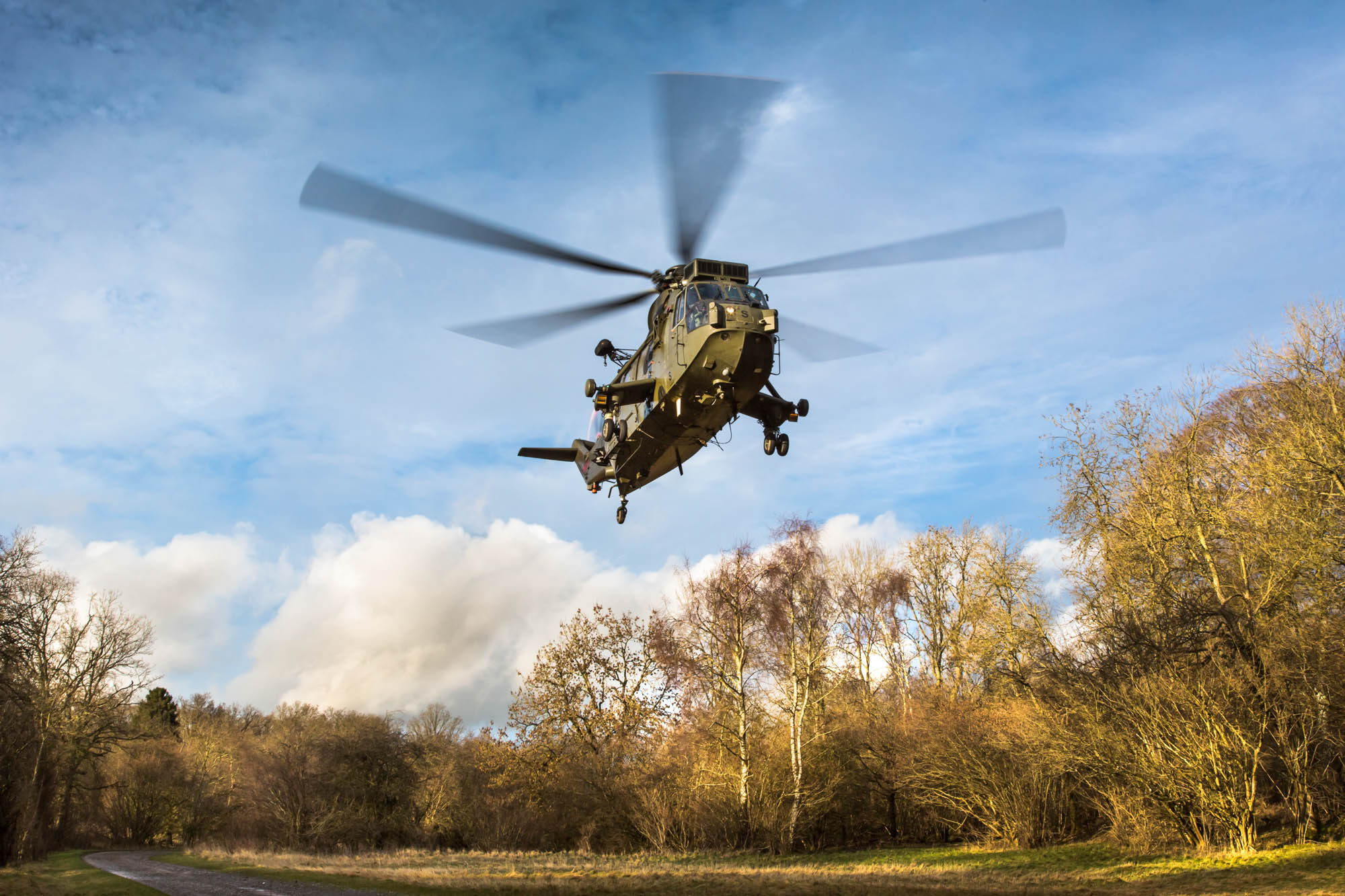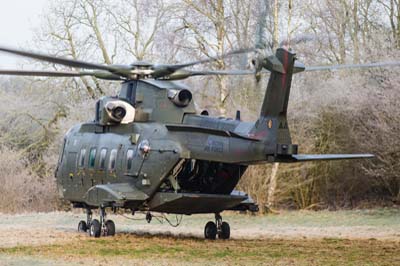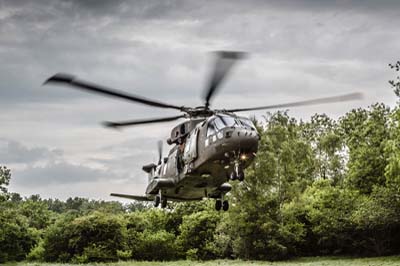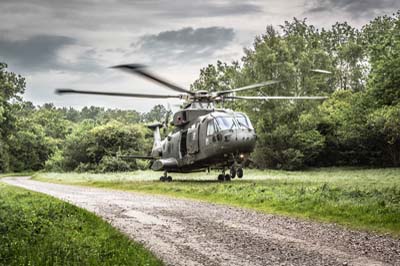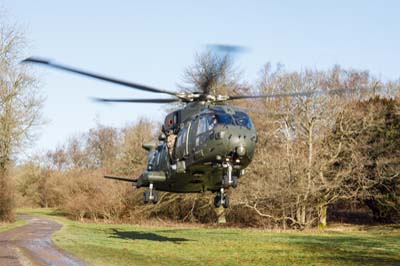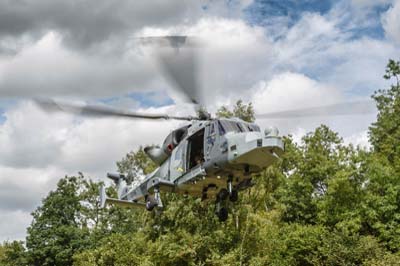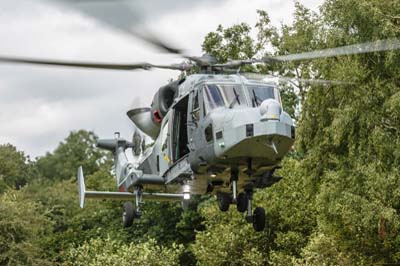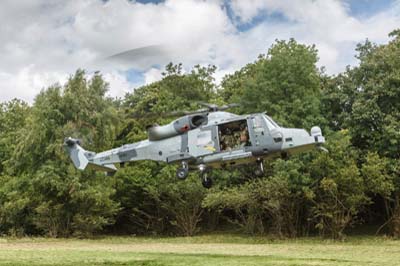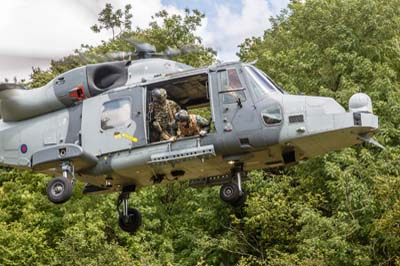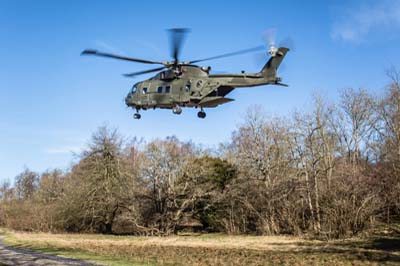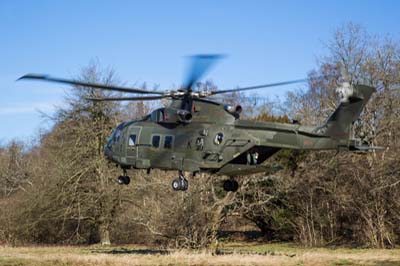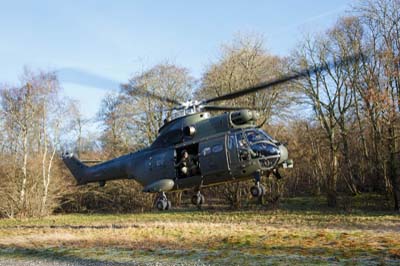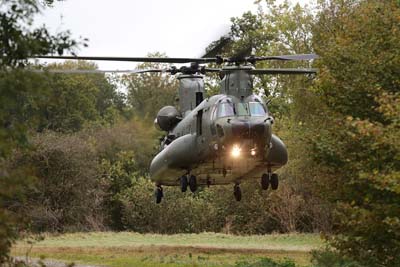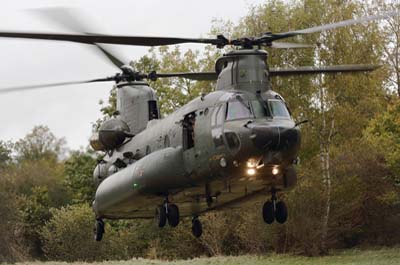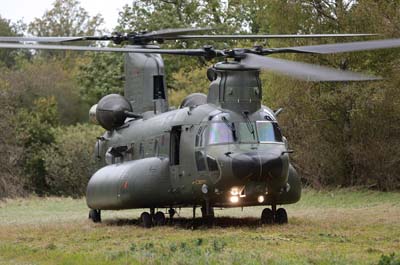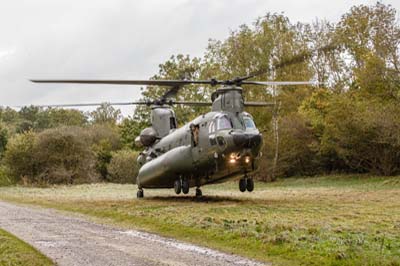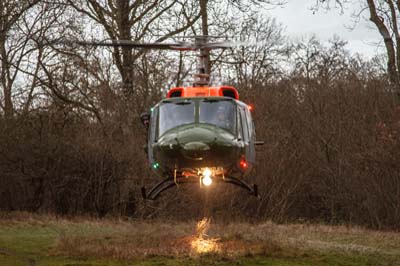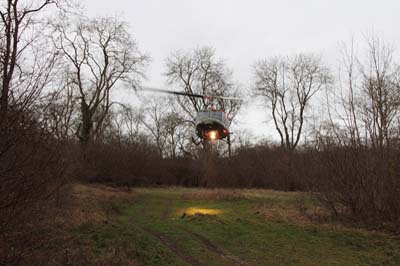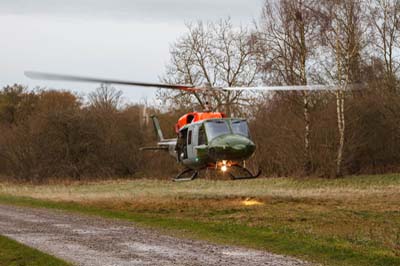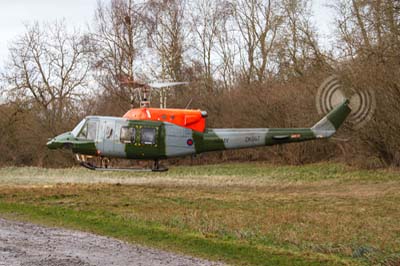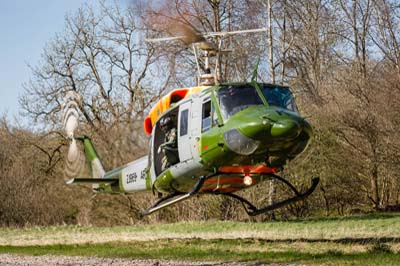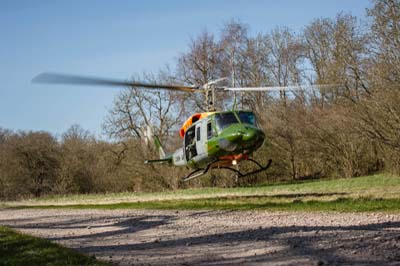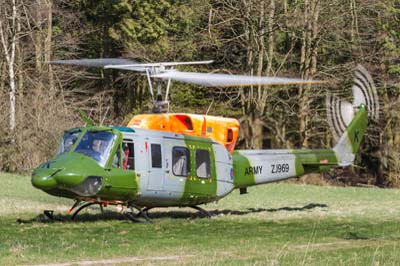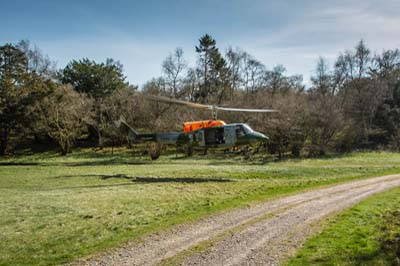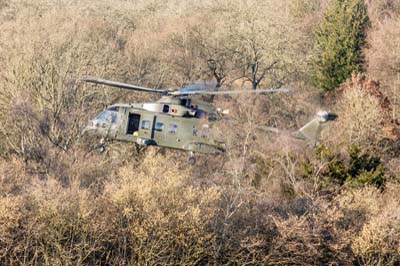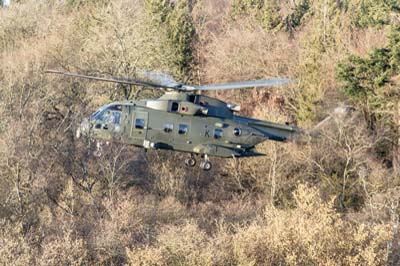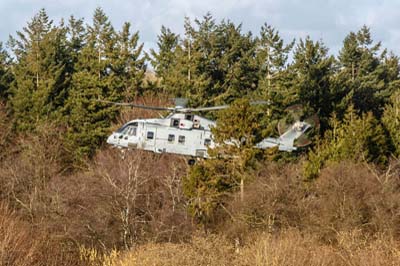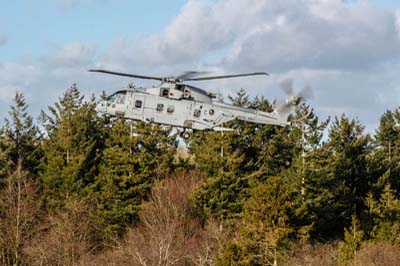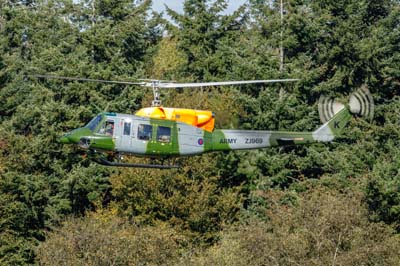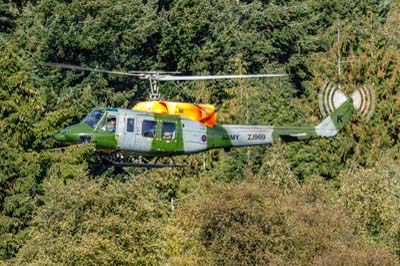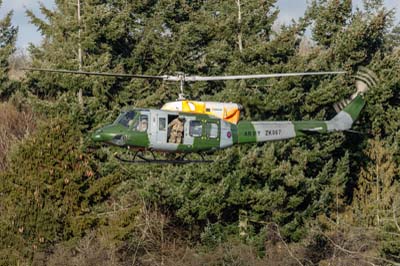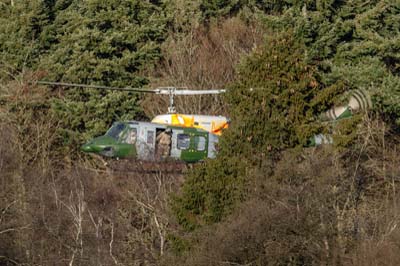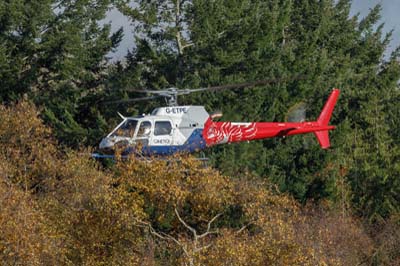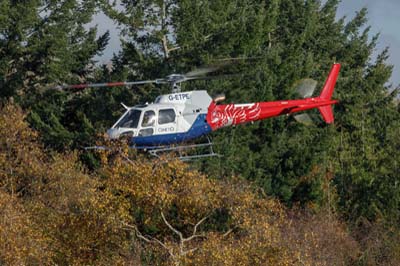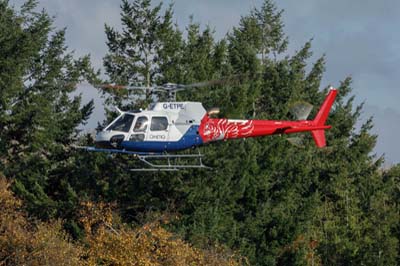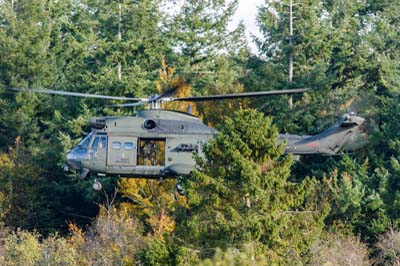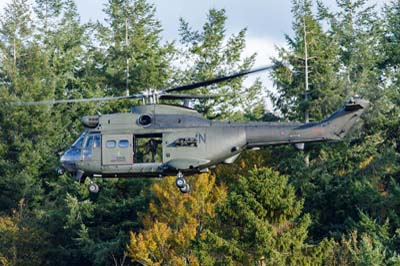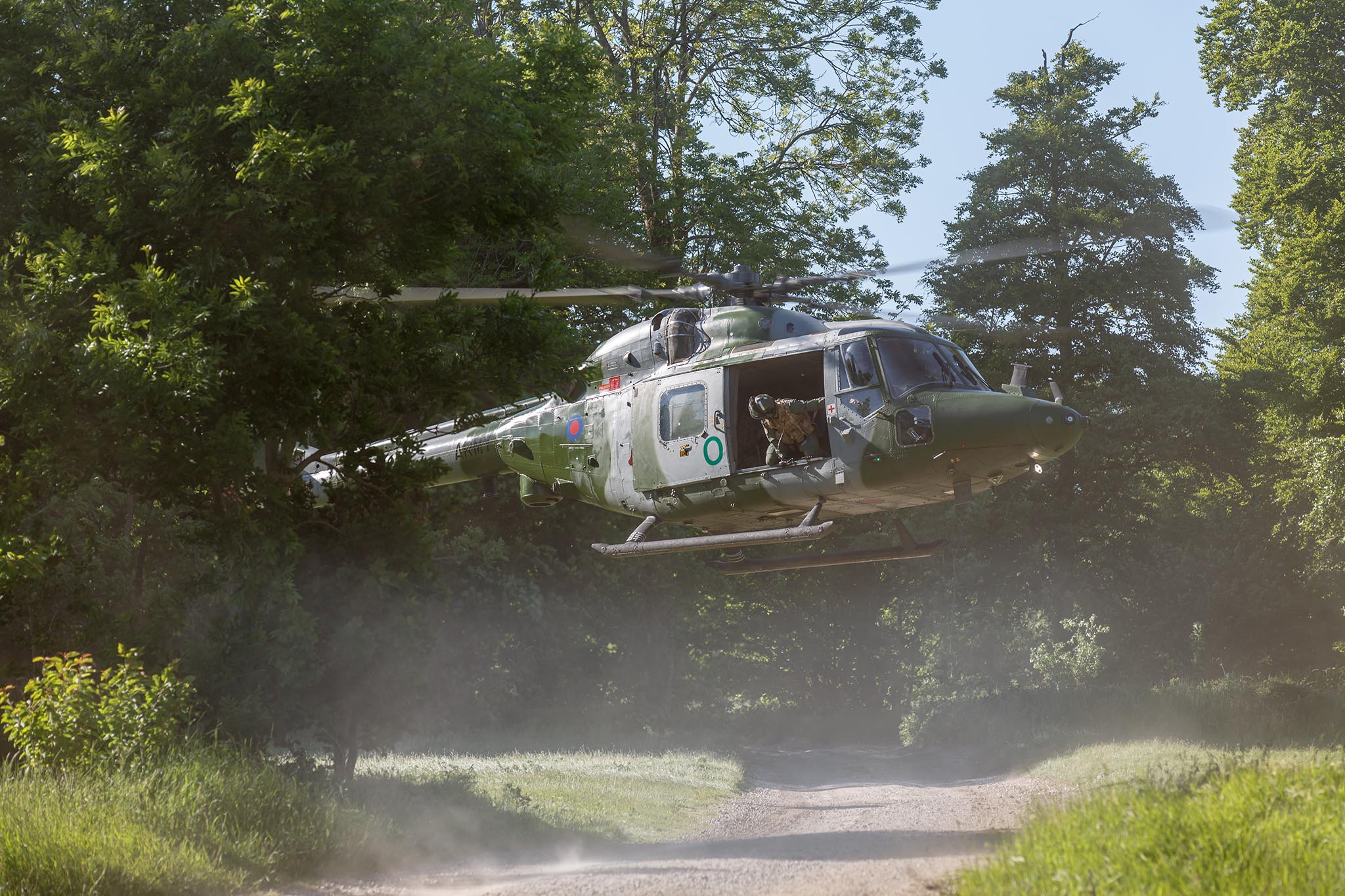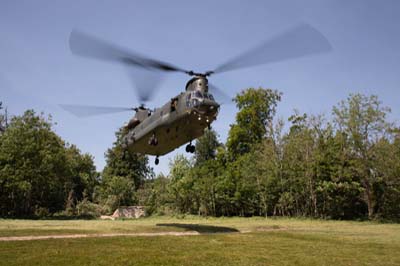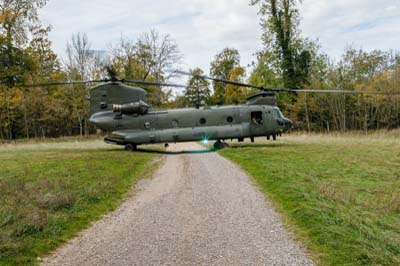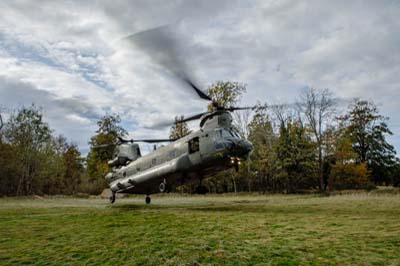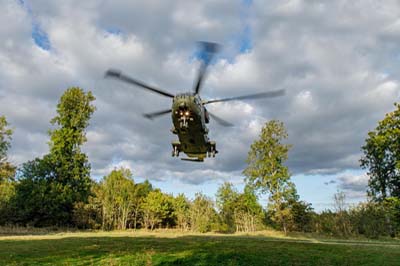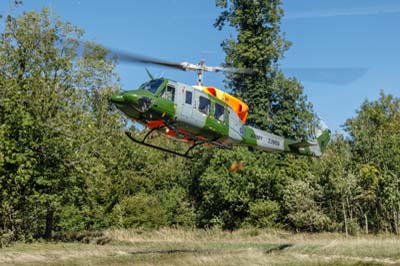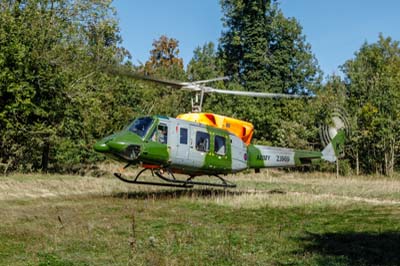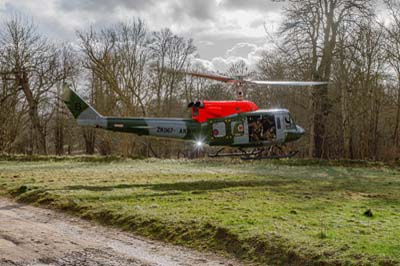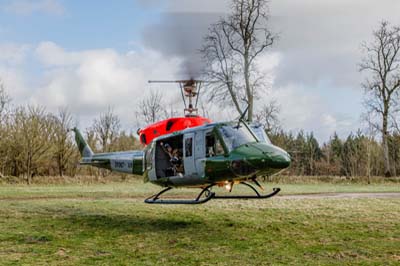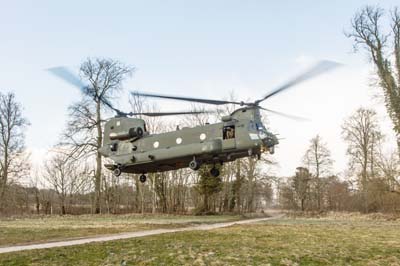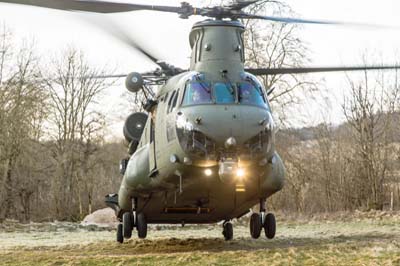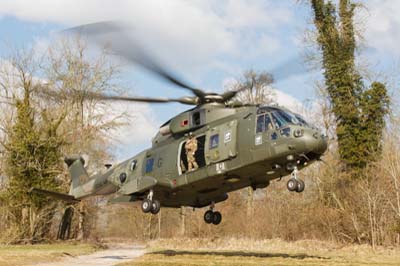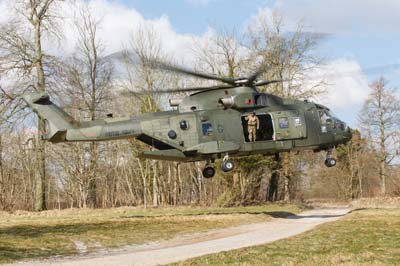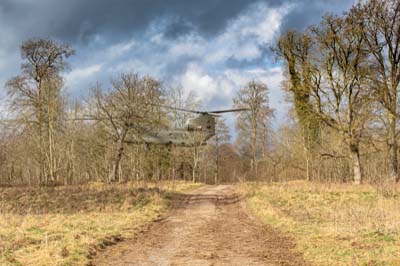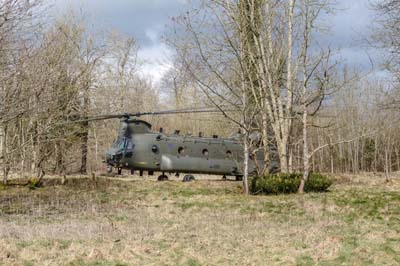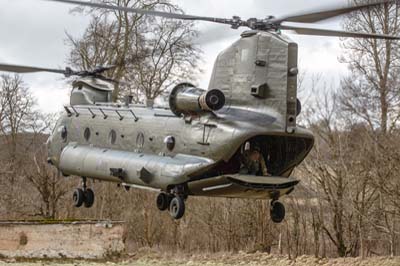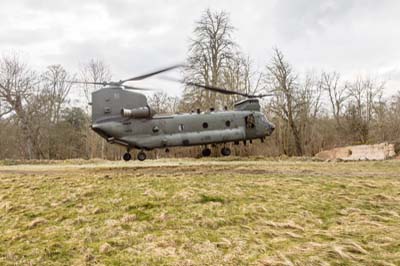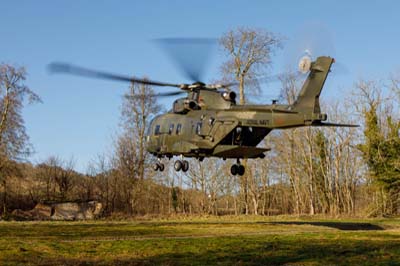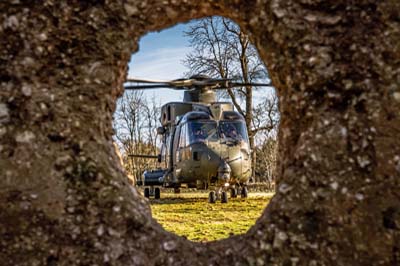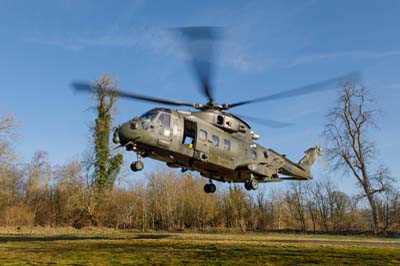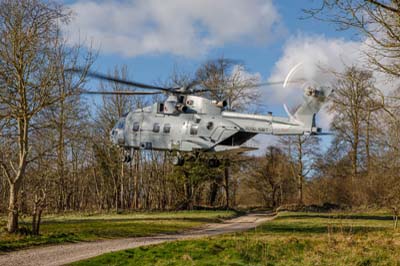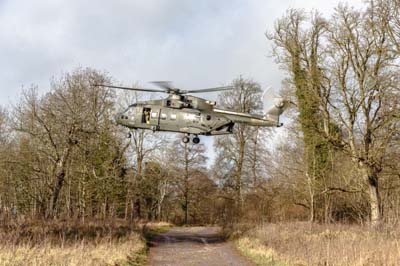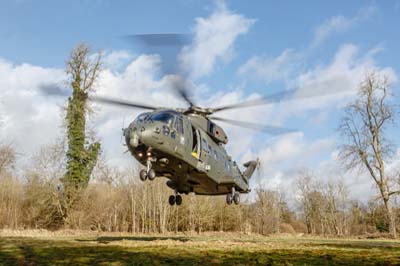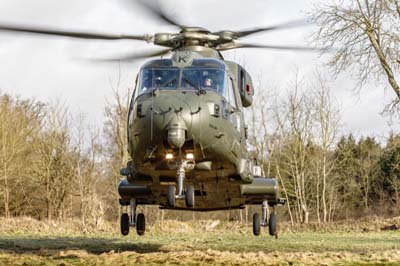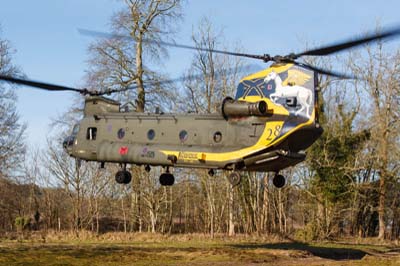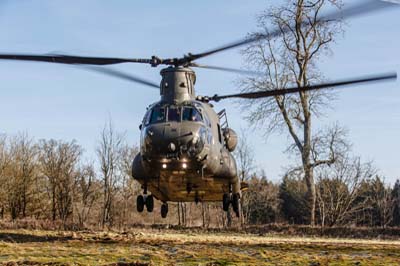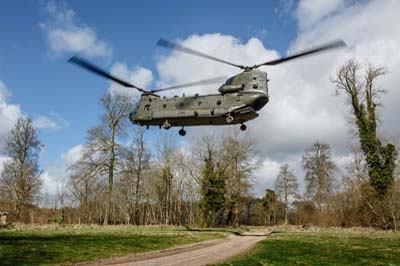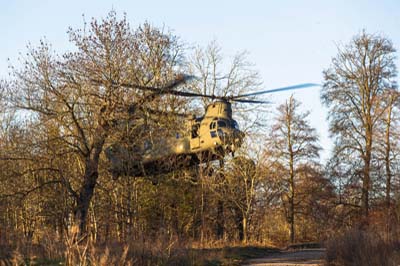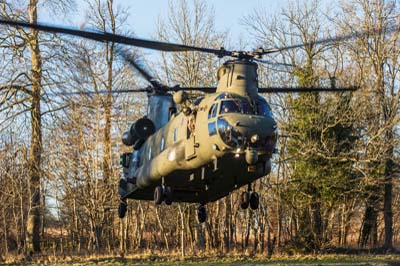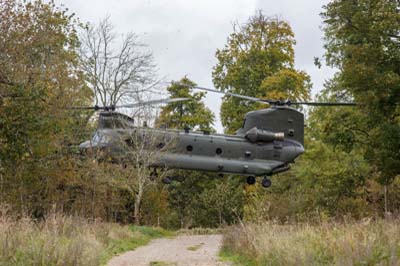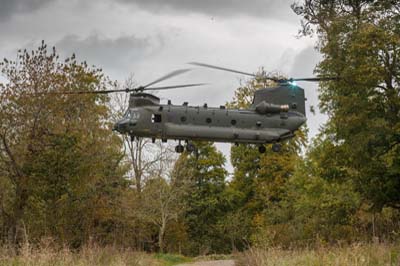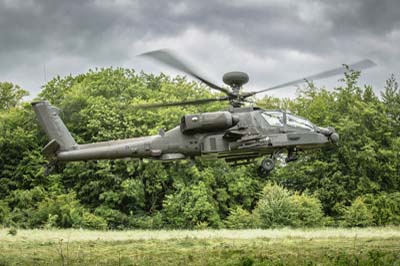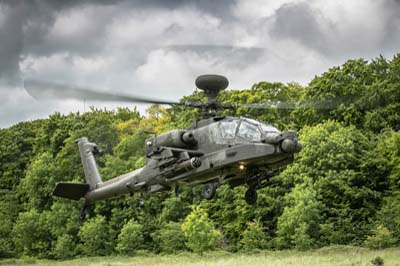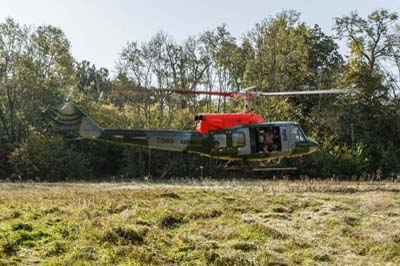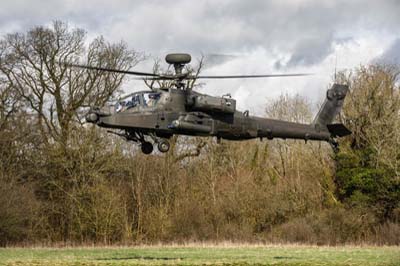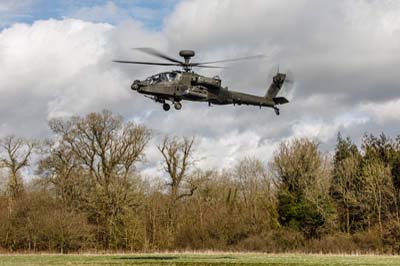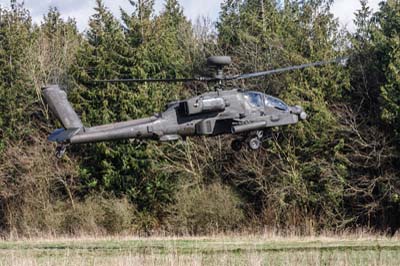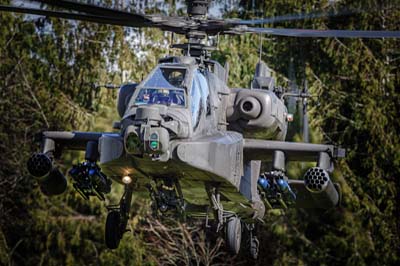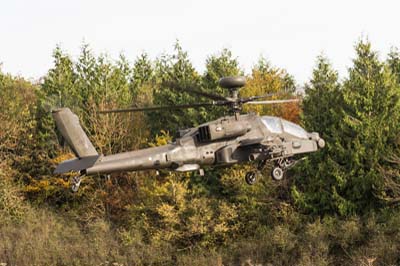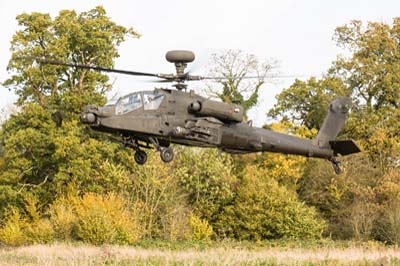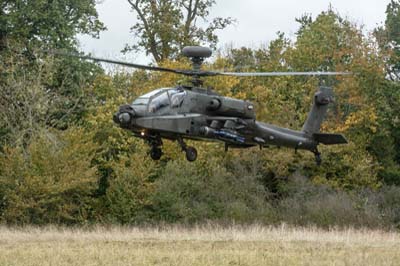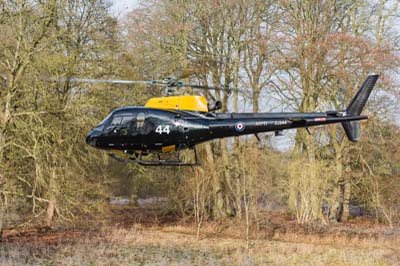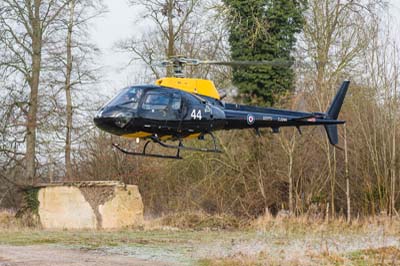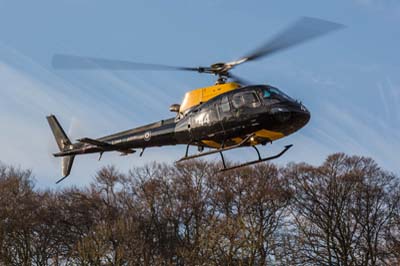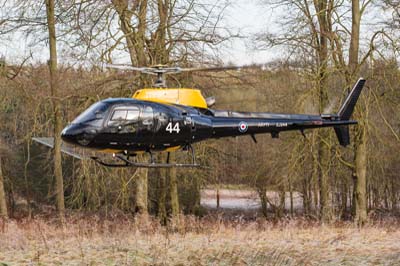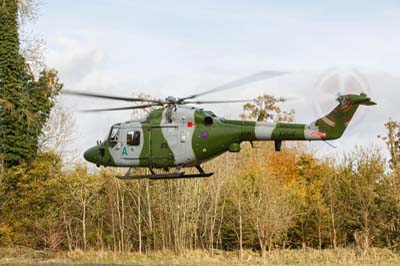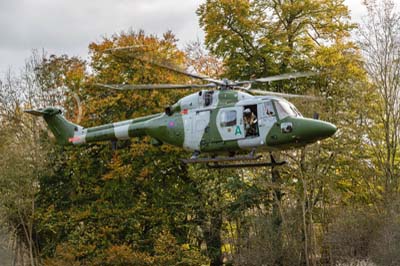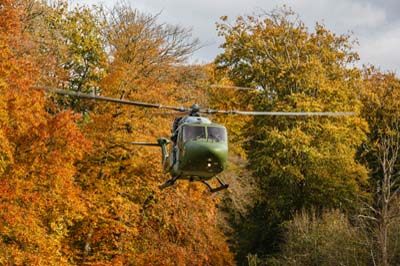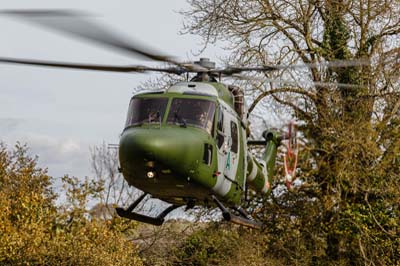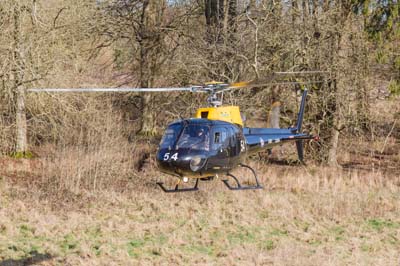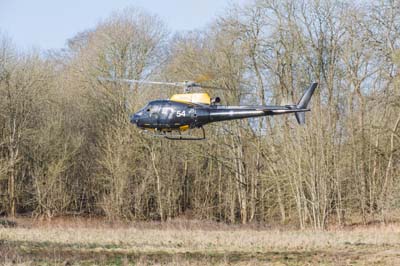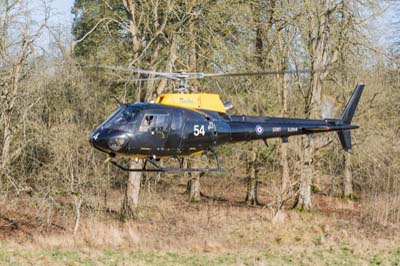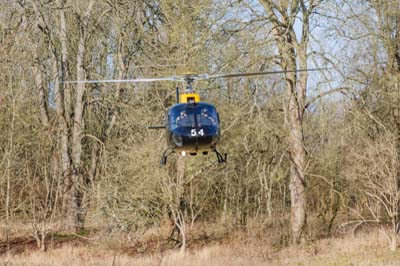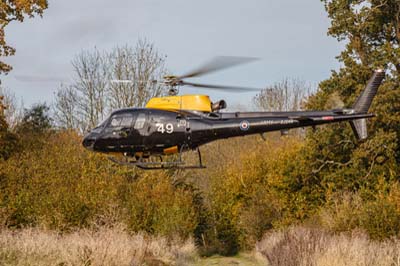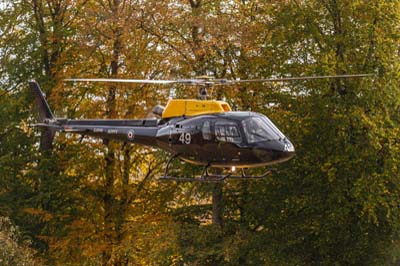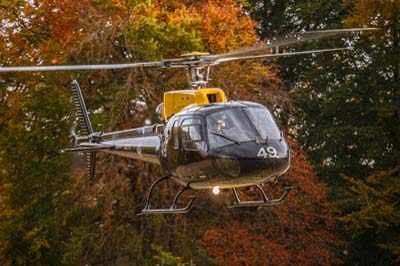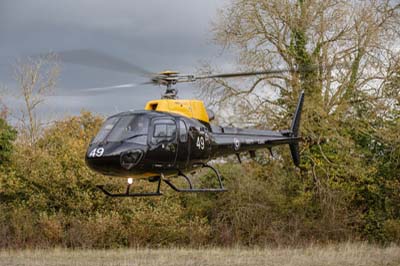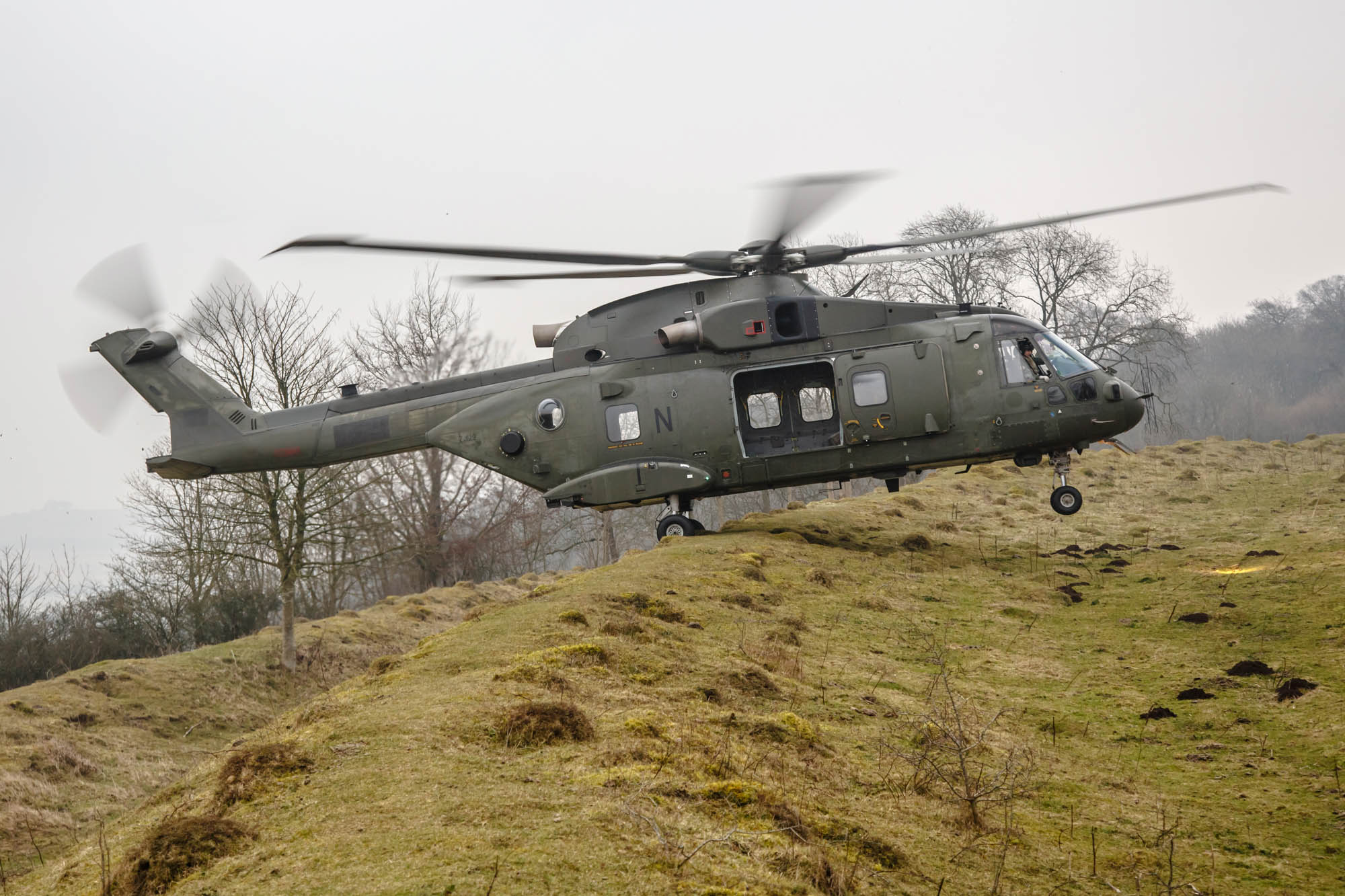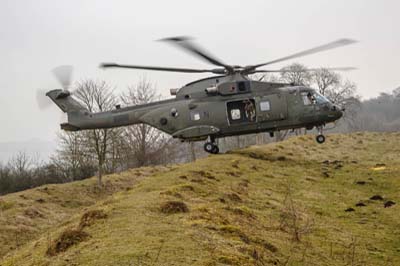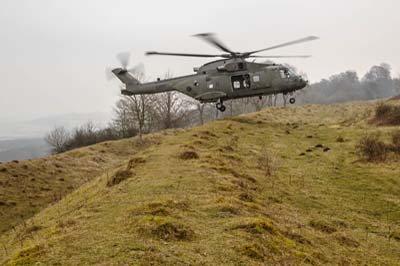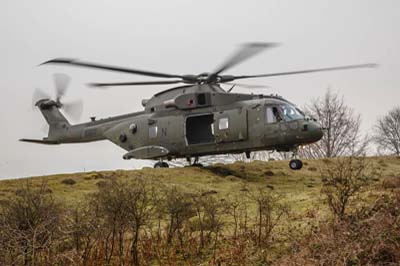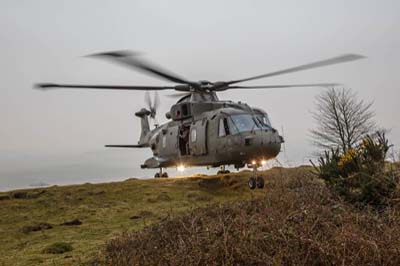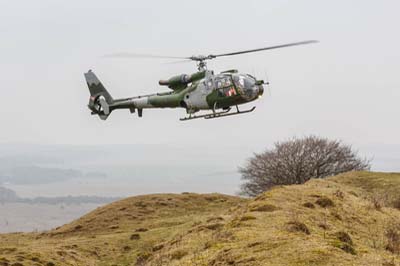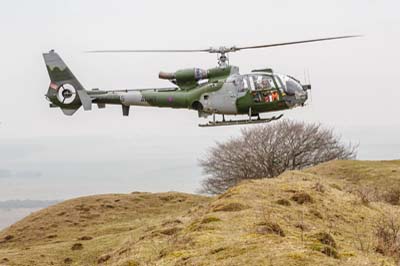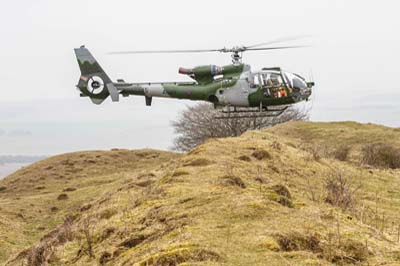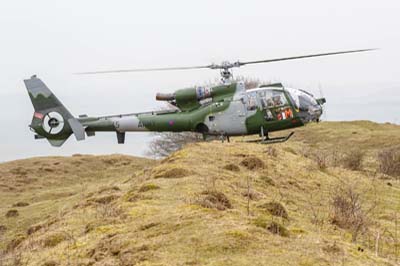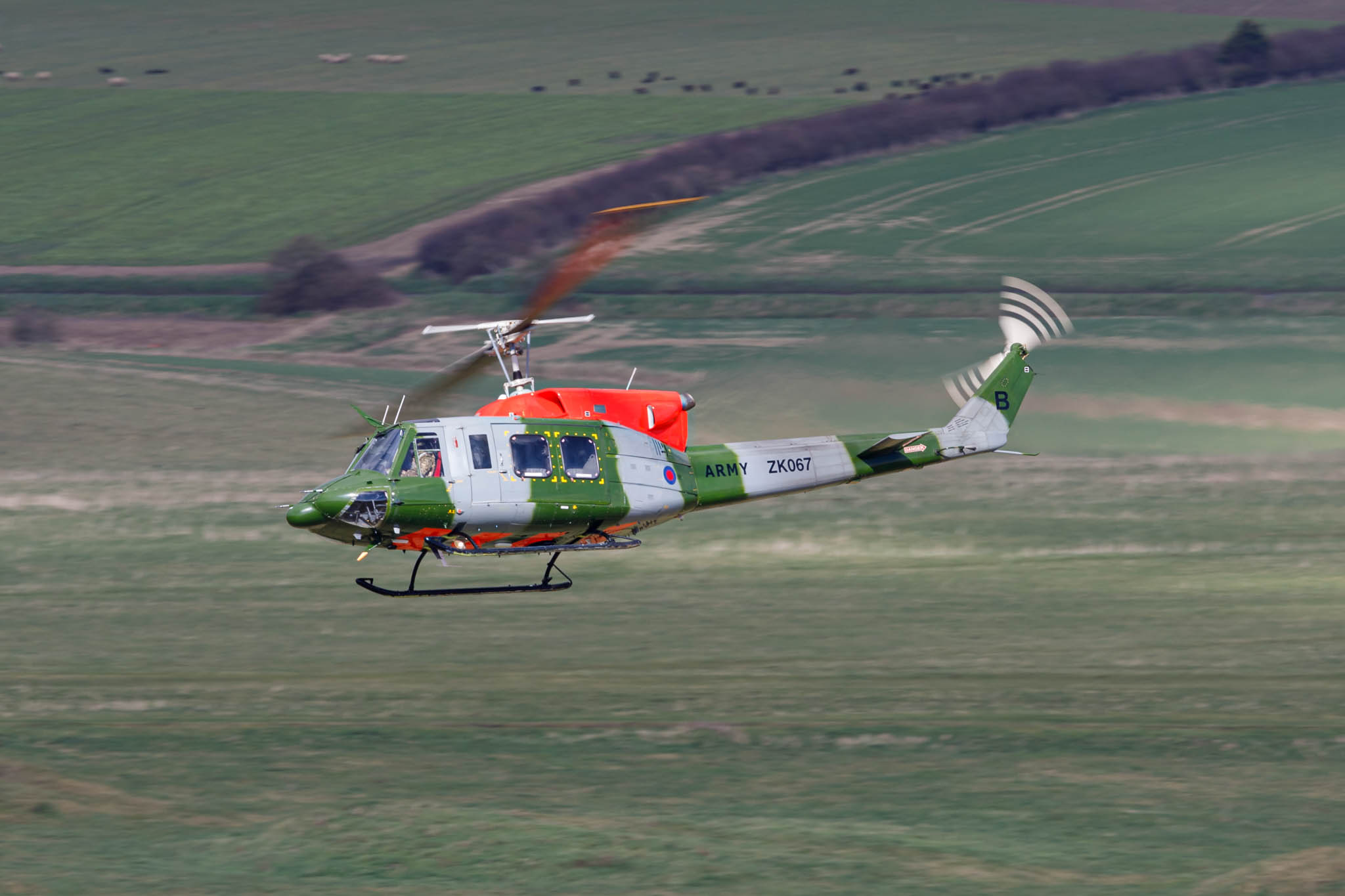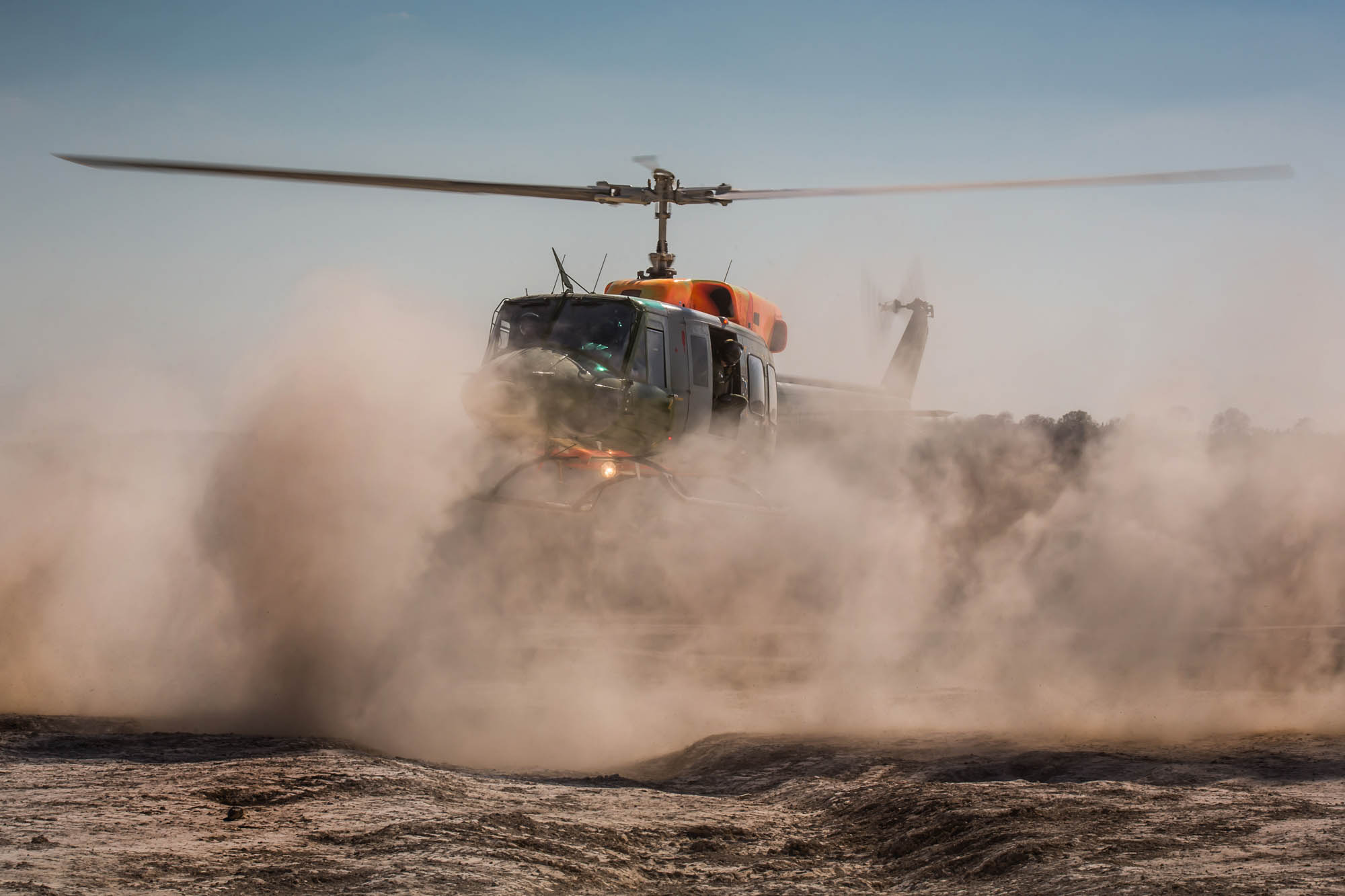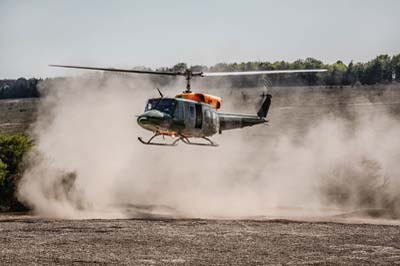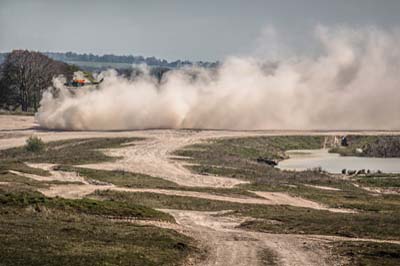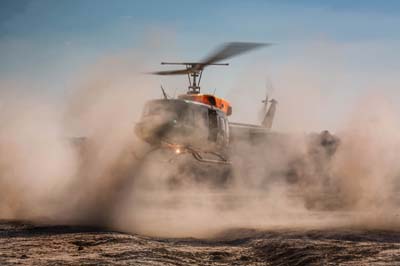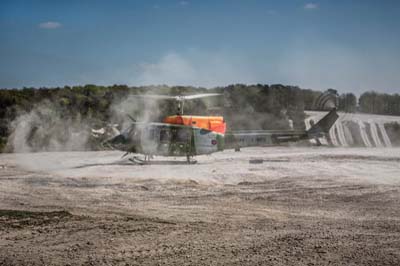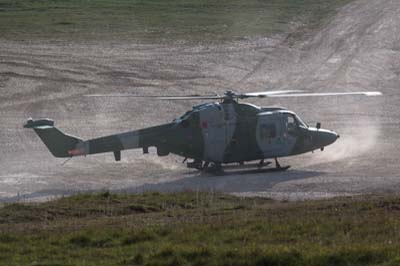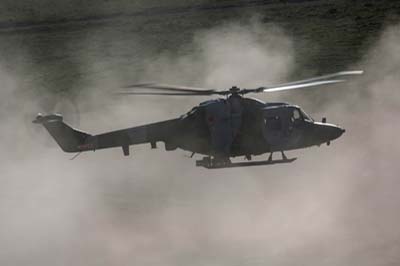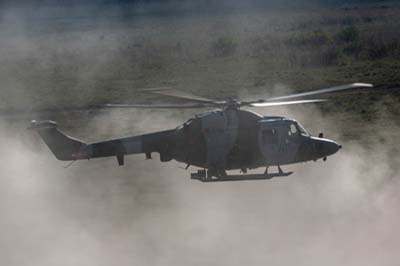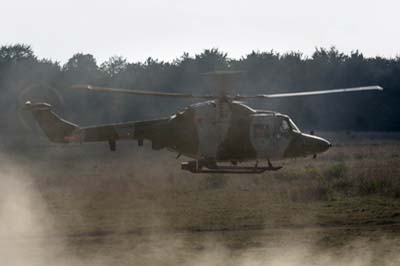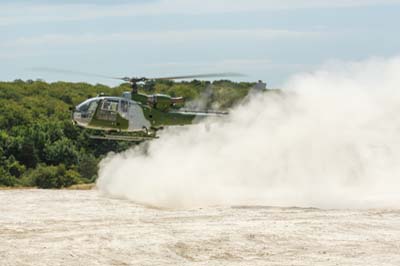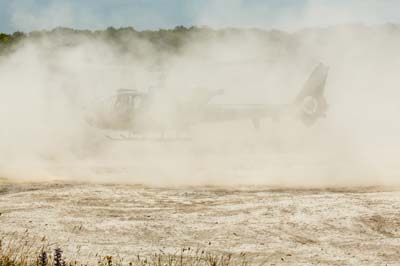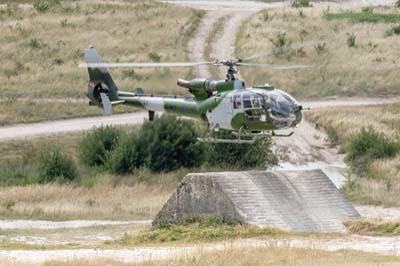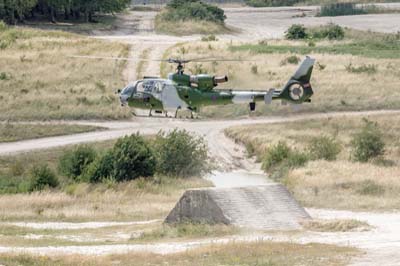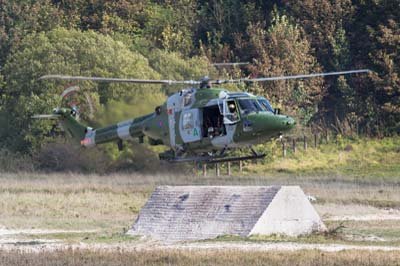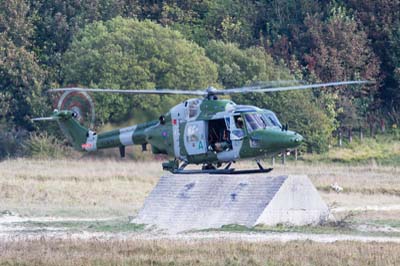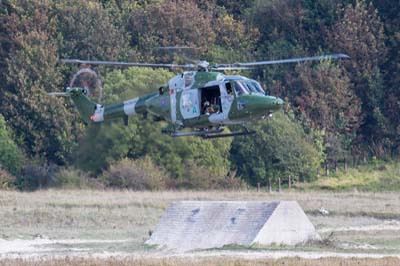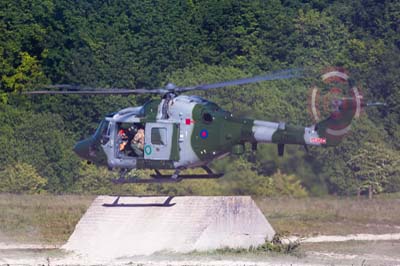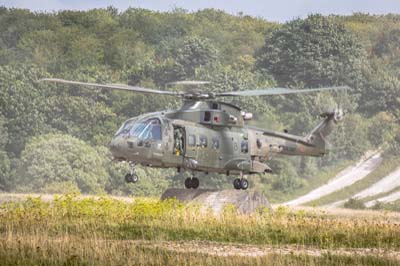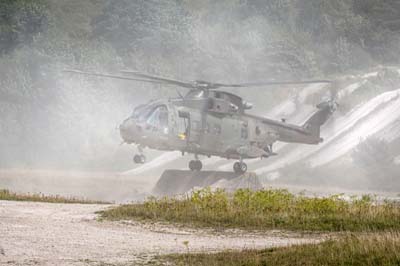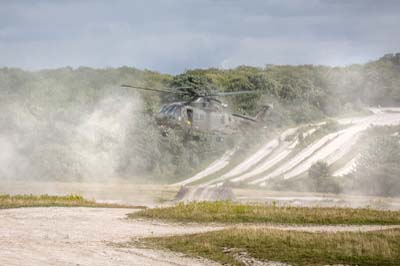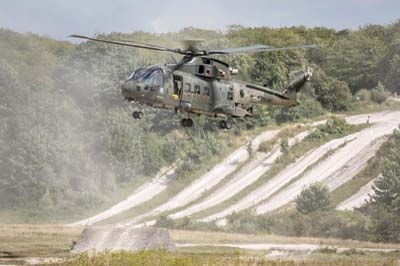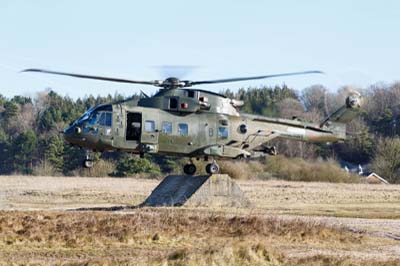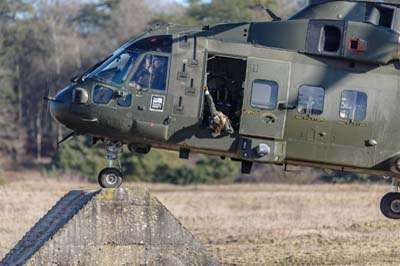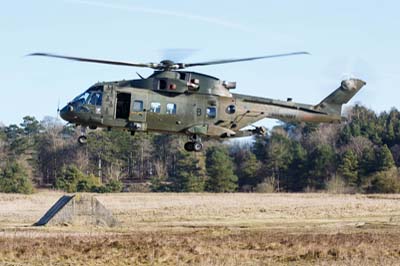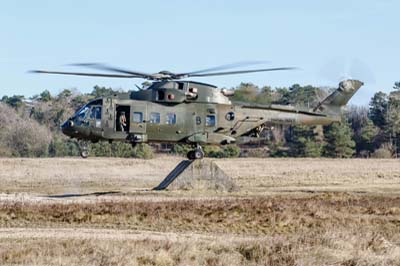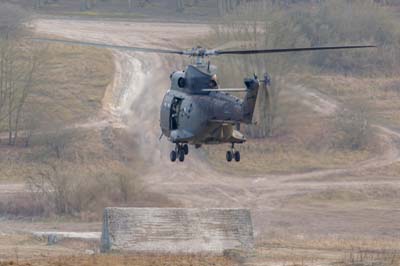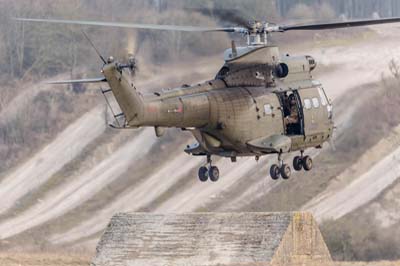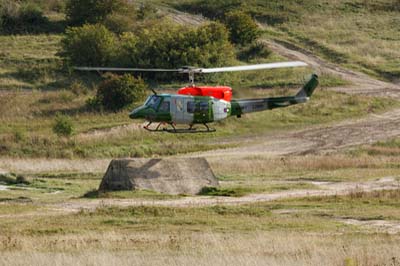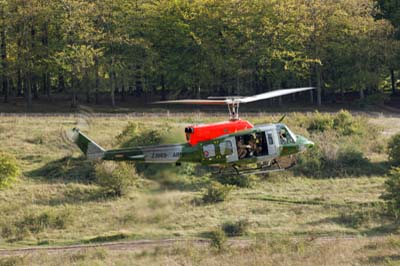Aviation Photography
Salisbury Plain Training Area (SPTA) |
Situated in central southern England Salisbury Plain is a chalk plateau of which around half has been used by the military for exercises since 1898. The Ministry of Defence (MoD) now own 150 square miles of the Plain of which almost 40 square miles are permanently closed to the public with restricted access in other areas.
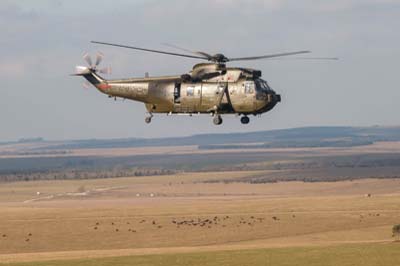
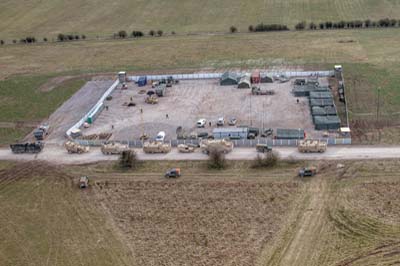
Aerial activity is also intensive, the Royal Air Force (RAF) and Army Air Corps (AAC) frequently conduct joint exercises utilising a range of aircraft from large transport aircraft and fast jets to helicopters. Principal users of the SPTA are the Joint Helicopter Command (JHC). The JHC are responsible for all Army Aviation units, an RAF Support Helicopter force, the Commando Helicopter Force and the 16 Air Assault Brigade (AAB). QinetiQ from nearby Boscombe Down manage various elements including the Empire Test Pilots School (ETPS) and the Rotary Wing Test Squadron (RWTS) which are also frequent users of the SPTA. Fixed wing aircraft from Islanders to C-130 Hercules often land on the SPTA’s grass airstrips.
The SPTA forms part of the United Kingdom Low-Flying System (UKLFS) and as low-flying Area (LFA) 1A it comes under the control of HQ Land Forces at Andover. However the Dedicated User Areas (DUA) allocated for intense helicopter activity has different rules applied compared those for other LFAs. While in the other LFAs a booking is only required for helicopters operating below 500 feet, whereas within a DUA a booking is required for all aircraft activity below 2,000 feet.
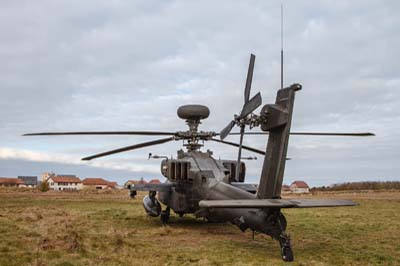
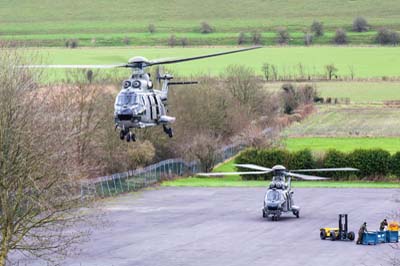 Copehill Down (FIBUA) Military Training Village (Fighting in built-up areas), this is a specially built urban complex, it is in regular use for military training and is run by the run by Land Warfare Centre at Warminster. It was proposed in 1986 and initially built to resemble a Bosnian village in the early 1990’s. Recent modifications include an Iraqi style village comprising mostly of large metal shipping containers.
Copehill Down (FIBUA) Military Training Village (Fighting in built-up areas), this is a specially built urban complex, it is in regular use for military training and is run by the run by Land Warfare Centre at Warminster. It was proposed in 1986 and initially built to resemble a Bosnian village in the early 1990’s. Recent modifications include an Iraqi style village comprising mostly of large metal shipping containers.
Imber Training Range when in use closes Imber village to public access. Imber was first evacuated in 1943 to allow training for Operation Overlord and has remained closed ever since, except for around 50 days per year. It has since had some buildings constructed for military training.
British Army camps and barracks situated within the SPTA are notably; Bulford Camp and small arms range, Larkhill Camp and the Royal School of Artillery’s range, Perham Down Camp and range, Tidworth Camp, Westdown Camp and artillery range and Warminster Camp and range. Well over 2,000 troops can be accommodated at any one time. During the year 300,000 troops utilise the permanent facilities with a further 350,000 troops catering for themselves in the field. Live firing is conducted on the various ranges for 340 days of each year. Knook Camp is a short flight away from Copehill Down and has been used by Swiss and Royal Norwegian Air Forces Special Forces to operate their helicopters from during exercises.
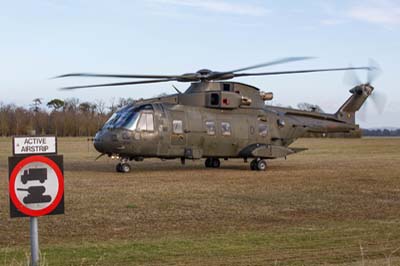 Grass airstrips or non-designated landing fields within the SPTA include; Everleigh, Deptford Down and Carter adjacent to Bulford Camp. Other locations known as ‘Confined Landing Areas’ (CLA) e.g. Lindens and Pennings are used to train helicopter pilots to manoeuvre just above ground level in tight clearing in wooded areas. Pilots using remote landing sites and confined landing areas for training utilise the Five S rule; Size, Shape, Surrounds, Surface and Slope. They will fly combinations of an orbital reconnaissance, fly by recce' or a hover recce. Dust and downwash can also be considered.
Grass airstrips or non-designated landing fields within the SPTA include; Everleigh, Deptford Down and Carter adjacent to Bulford Camp. Other locations known as ‘Confined Landing Areas’ (CLA) e.g. Lindens and Pennings are used to train helicopter pilots to manoeuvre just above ground level in tight clearing in wooded areas. Pilots using remote landing sites and confined landing areas for training utilise the Five S rule; Size, Shape, Surrounds, Surface and Slope. They will fly combinations of an orbital reconnaissance, fly by recce' or a hover recce. Dust and downwash can also be considered.
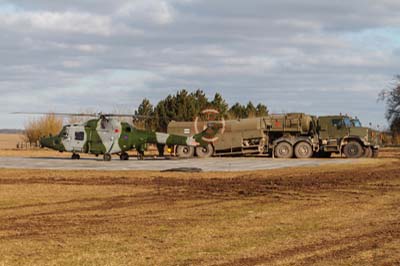
The Cross-Country Driving Area (CCDA) in the summer months becomes very dusty and is regularly used by helicopter pilots to practice for 'brown-out' conditions.
Airfields situated in and around the SPTA include; Netheravon (Army Airfield Camp and the home of the Army Parachute Association), Upavon (now Trenchard Lines Airfield Camp), it is an AAC and RAF gliding centre, Keevil (MoD), AAC Middle Wallop, RAF Benson, RAF Odiham and Boscombe Down (QinetiQ).
Everleigh (DZ), Imber (DZ) and Fox Covert (DZ).
Field based Forward Refuelling Points (FRP) can be set up anywhere within the SPTA. A 'farp' as it is commonly called, which in a live situation becomes a Forward Arming and Refuelling Point (FARP), is a temporary location for hot refuelling multiple helicopters simultaneously using Oshkosh Combat Support Tankers (CST) in a matter of minutes. |
| Confined landing area (CLA) known as 'The Lindens |
Bell 212 AH.3 (ZK067 'B') in Lindens 1 confined landing area using callsign 'Army Air 001' of 7 (Training) Regiment Conversion Flight in January 2019.
(DSLR full-frame sensor + Canon EF 24-105mm (55mm) f.4L IS II USM at 1/125 f4 ISO 200 with -1 exposure compensation). |
Lindens 1
Left to right: Bell 212HP AH.1 (ZJ969 'K') using callsign 'Army Air 731' of 7 (Training) Regiment Conversion Flight in the confined landing area in October 2019.
Puma HC.2 (XW231 'N') with 28/33/230 Squadron (Benson Wing) Joint Helicopter Command leaving the CLA in November 2021. |
Left to right: Wildcat HMA.2 (ZZ517) using callsign 'Talon 722' with 825 Naval Air Squadron based at RNAS Yeovilton at rest and basking in the sun in May 2020.
Wildcat HMA.2 (ZZ517) using callsign 'Talon 700' in May 2020.
Wildcat HMA.2 (ZZ375) using callsign 'Rascal 381' back in service after being upgraded with Leonardo at Yeovil at the end of 2019 and now possibly with 825 Naval Air Squadron in July 2020. DSLR full-frame sensor + Canon 24-105mm (70mm) F4L IS zoom lens at 1/40 f4 ISO 250. |
Left to right: Bell 212 AH.3 (ZK067 'B') in 'Lindens 1' confined landing area using callsign 'Army Air 760' of 7 (Training) Regiment Conversion Flight (formally 671 Squadron) in February 2016.
Bell 212 AH.3 (ZK067 'B') in Lindens 1 confined landing area using callsign 'Army Air 001' of 7 (Training) Regiment Conversion Flight in January 2019. |
| Left to right: Gazelle AH.1 (XZ345 'M') using callsign 'Army Air 746' of 7 (Training) Regiment Conversion Flight based at Middle Wallop in 'Lindens 1' in January 2017. |
| Left to right: Bell 212HP AH.1 (ZJ969 'K') using callsign 'Army Air 735' of AAC 7 (Training) Regiment Conversion Flight during two hours long winch training exercises at 'Lindens 1' in March 2018. |
Lindens 8
Left to right: Bell 212 AH.3 (ZK067 'B') using callsign 'Army Air 760' of 7 (Training) Regiment Conversion Flight (formally 671 Squadron) conducting winch training over the tumulus deep in to the Lindens in February 2016 and again with Bell 212HP AH.1 (ZJ969 'K') in September 2019.
Bell 212HP AH.1 (ZJ969 'K') using callsign 'Army Air 731' of 7 (Training) Regiment Conversion Flight in October 2019. |
Lindens 'Triangle'
Left to right: Puma HC.2 (XW232 'P') using callsign 'Vortex 365' with 28 Squadron in the 'Triangle' in January 2020.
Puma HC.2 (XW224) Despite the 230 tiger squadron scheme it is pooled with 28, 33 and 230 Squadrons, it is based at RAF Benson. October 2020. |
| Left to right: Puma HC.2 (XW213 'E') using callsign 'Vortex 281' with 28/33/230 Squadron (Benson Wing) Joint Helicopter Command in November 2022. |
| Left to right: Wildcat HMA.2 (ZZ517) using callsign 'Talon 700' with 825 Naval Air Squadron based at RNAS Yeovilton in May 2020. |
Left to right: Bell 212 AH.3 (ZK067 'B') at the 'Triangle' using callsign 'Army Air 760' of 7 (Training) Regiment Conversion Flight in February 2016.
Bell 212HP AH.1 (ZJ969 'K') using callsign 'Army Air 731' of 7 (Training) Regiment Conversion Flight in the Lindens Triangle in October 2019.
Griffin HAR.2 (ZJ705) using callsign 'Gauntlet 37' with QinetiQ in the Lindens Triangle in February 2018. |
| Left to right: Merlin HC.3 (ZJ126 'K') of 846 Naval Air Squadron in the Lindens 'Triangle' in January 2018. |
| Left to right: Sea King HC.4 (ZD626 'S') of 845 Naval Air Squadron at three locations within the Lindens 'Triangle' and Lindens 4, 5 and 6 according to their comm's in January 2014. |
| Left to right: Gazelle AH.1 (ZB692 'Y') of 671 AAC Squadron he School of Army Aviation at three locations in the Lindens starting at the 'Triangle' in February 2015. |
Left to right: Squirrel HT.1 (ZJ246 '46') callsign 'Army Air 703' at the 'Triangle' in the Lindens CLA in November 2013.
Squirrel HT.1 (ZJ245 '45') callsign 'Army Air 724' at the 'Triangle' in the Lindens CLA in July 2014. |
| Left to right: Squirrel HT.1 (ZJ253 '53') callsign 'Army Air 712' at the 'Triangle' in the Lindens CLA in March 2014. Squirrel HT.1 (ZJ253 '53' callsign 'Army Air 724' and ZJ245 '45' callsign 'Army Air 729') visiting some other places away from the tall trees around the Lindens in July 2014. |
Left to right: Lynx AH.7 (ZD274 'E' ) at the 'Triangle' within the Lindens confined landing area in December 2011.
Puma HC.2 (ZJ956) pooled with 33 and 230 Squadron using callsign 'Vortex 305' at the 'Triangle' within the Lindens confined landing area in January 2017.
Gazelle AH.1 (XZ345 'M') using callsign 'Army Air 746' of 7 (Training) Regiment Conversion Flight at the 'Triangle' within the Lindens confined landing area in January 2017. |
| Puma HC.2 (XW219) using callsign 'Vortex 003' of 33/230 Squadron crew identify and check out the landing zone in the confined landing area carefully and after several low passes approach and drop in with all crew advising the pilot of the proximity of the trees and the ground in September 2014. |
Beside Lindens 'Spectacles'
Left to right: Gazelle AH.1 (ZB692 'Y') of 671 AAC Squadron the School of Army Aviation in the small confined landing area in the Lindens beside the 'spectacles' in April 2015.
Lynx AH.9A (ZE376) using callsign 'AA674' it is with 667 Squadron (HQ Director Army Aviation Development and Trials) in the same confined landing area in March 2017.
|
| Left to right: Wildcat HMA.2 (ZZ517) using callsign 'Talon 700' with 825 Naval Air Squadron based at RNAS Yeovilton in May 2020. |
Lindens 'Spectacles'
Left to right: Puma HC.2 (XW232 'P') using callsign 'Vortex 365' with 28 Squadron in January 2020.
AgustaWestland AW109SP Grand New (G-MAOL) using callsign 'Northolt 23' with 32(TR) Squadron in June 2020. |
| Left to right: Squirrel HT.1 (ZJ249 '49') using callsign 'AA702' of 670 (Training) Squadron in the Lindens in April 2015. |
Sea King HC.4 (ZD626 'S') arrives at the Lindens 'Spectacles' confined landing area In January 2014.
(DSLR full-frame sensor + Canon EF 24-105mm (40mm) f.4 L IS at 1/80 f.20 ISO 100 with -1 exposure compensation). |
Left to right: Merlin HC.3 (ZJ990 'AA') it was using callsign 'Vortex 783' in the Lindens 'Spectacles' confined landing area in January 2013.
Merlin HC.3 (ZJ128 'M') using callsign 'Commando 510' of 846 Naval Air Squadron now based at based at RNAS Yeovilton in June 2015.
Merlin HC.3 (ZJ126 'K') of 846 Naval Air Squadron based at RNAS Yeovilton in January 2018. |
| Left to right: Wildcat AH.1 (ZZ388) using callsign 'Recon 321' with 1 Regiment Army Air Corps in July 2017. |
Left to right: Merlin HC.3 (ZJ126 'K') using callsign 'Commando 546' of 846 Naval Air Squadron in February 2016.
Puma HC.2 (XW231) pooled with 33 and 230 Squadron using callsign 'Vortex 302' in January 2017. |
| Chinook HC.3 (ZH900) using a 'Vortex' callsign in the Lindens confined landing area in October 2012. |
| Left to right: Bell 212 AH.3 (ZK067 'B') of 671 Squadron (now known as 7 (Training) Regiment Conversion Flight) operating in the 'Lindens' in November 2011. The Bell 212 dropped down in to two clearings the second known as the 'Spectacles'. |
| Left to right: Bell 212HP AH.1 (ZJ969 'K') using callsign 'Army Air 760' of 671 Squadron at the 'Spectacles' and 'Triangle' in the 'Lindens' in April 2015. |
| Left to right: Merlin HC.3 (ZJ126 'K') of 846 Naval Air Squadron based at RNAS Yeovilton emerging from the Lindens triangle in January 2018. Merlin HC.4 (ZJ119 'C') using callsign 'Commando 554' with 845 NAS in March 2020. |
Left to right:
Bell 212HP AH.1 (ZJ969 'K') using callsign 'Army Air 735' dropping in to a confined landing area in September 2018.
Bell 212 AH.3 (ZK067 'B') using callsign 'Army Air 001' of 7 (Training) Regiment Conversion Flight in January 2019. |
| Left to right: Airbus Helicopters H125 Ecureuil (G-ETPE) using callsign 'Gauntlet 37/Boscombe Down 39' operated by QinetiQ based at Boscombe Down in November 2020. |
| Left to right: Puma HC.2 (XW231 'N') with 28/33/230 Squadron (Benson Wing) Joint Helicopter Command leaving the CLA in November 2021. |
| Confined Landing Area (CLA) known as 'The Pennings' |
Pennings 'Walled Garden'
Lynx AH.7 (XZ651 'O') of 671 Squadron dropping in to the CLA in June 2015. |
Left to right: Chinook HC.6A (ZA680) using callsign 'Vortex 282' with 28 Squadron (Chinook and Puma Operational Conversion Unit) based at RAF Benson in May 2020.
Chinook HC.6A (ZA711) using callsign 'Vortex 255' with 28 Squadron (Chinook and Puma Operational Conversion Unit) in October 2020. |
Left to right: Merlin HC.3i (ZJ130 'O') with 846 Naval Air Squadron, Royal Navy using callsign 'Junglie 560' based at RNAS Yeovilton.
Bell 212HP AH.1 (ZJ969 'K') callsign 'Army Air 735' of AAC 7 (Training) Regiment Conversion Flight in the Pennings 'walled garden' in September 2018. |
| Left to right: Bell 212 AH.3 (ZK067 'B') using callsign 'Army Air 731' of 7 (Training) Regiment Conversion Flight in the Pennings 'walled garden' in February 2020. |
Left to right: Chinook HC.6 (ZK558) using callsign 'Vortex 507' with 7 Squadron based at RAF Odiham in the Pennings 'walled garden' in February 2018.
Merlin HC.3 (ZJ123 'G') with callsign 'Commando 558' of 846 Naval Air Squadron in the Pennings 'walled garden' in February 2018. |
| Left to right: Chinook HC.4 (ZA677 and ZA670) in the Pennings 'walled garden' using callsign 'Vortex 251' in March 2018. |
| Left to right: Merlin HC.3i (ZJ135 'T') using callsign 'Avenger 094' with 846 NAS in the Pennings 'walled garden' in January 2019. Merlin HC.4 (ZJ119 'C') using callsign 'Commando 554' with 845 NAS in 2020. |
| Left to right: Merlin HC.3 (ZJ126 'K') of 846 Naval Air Squadron in the Pennings 'walled garden' in January 2018. |
Left to right: Chinook HC.4 (ZH777) better known as 'Peggy' it is painted to commemorate 100 years of 28(R) Squadron it is based at RAF Odiham in January 2017.
Chinook HC.4 (ZA713) with 27 Squadron based at RAF Odiham in March 2017. |
Left to right: Chinook HC.6 (ZK558) using callsign 'Vortex 483' with 7 Squadron dropping in to the Pennings 'walled garden' in November 2016.
Chinook HC.4 (ZA720 'AW') with 27 Squadron deaprting the Pennings 'walled garden' in October 2017. |
Left to right: Apache AH.1 (ZJ193) callsign 'Panther 80' of 673 (AH Training) Squadron in June 2015.
Bell 212HP AH.1 (ZJ969 'K') using callsign 'Army Air 731' of 7 (Training) Regiment Conversion Flight in eastern end of the Pennings in October 2019. |
| Left to right: Apache AH.1 (ZJ203) of 673 (AH Training) Squadron in the 'Pennings' Confined Landing Area in March 2020. |
Left to right: Apache AH.1 (ZJ211) callsign 'Panther 83' of 673 (AH Training) Squadron in the 'Pennings' Confined Landing Area in November 2013.
Apache AH.1 (ZJ203) using callsign 'Award 79' with 673 (AH Training) Squadron in June 2020 in the same field.
Apache AH.1 (ZJ209) using callsign 'Award 67' with 673 (AH Training) Squadron in October 2020. |
| Left to right: Squirrel HT.1 (ZJ244 '44') operating at a number of locations around the 'Pennings' confined landing area in January 2013. |
| Lynx AH.7 (XZ641 'A') operating at three locations within the 'Pennings Triangle' confined landing area in October 2012. |
| Left to right: Squirrel HT.1 (ZJ254 '54') in the Pennings adjacent to the 'shed' in January 2018. |
| Eurocopter AS350BB Squirrel HT.1 (ZJ249 '49') operating at three locations around the 'Pennings' confined landing area in October 2012. |
| Left to right: Merlin HC.3 (ZJ129 'N') using callsign 'Commando 557' of the Royal Navy in January 2017, this was the first ever touch down by a Merlin on Sidbury Hill. |
| Left to right: Gazelle AH.1 (XZ345 'M') using callsign 'Army Air 746' of 7 (Training) Regiment Conversion Flight (formally 671 Squadron) in January 2017, probably the first touch down by a Gazelle on Sidbury hill. |
| Bell 212 AH.3 (ZK067 'B') using callsign 'Army Air 731' of 7 (Training) Regiment Conversion Flight passing Sidbury hill in March 2020. |
| The Cross-Country Driving Area (CCDA) |
| Bell 212HP AH.1 (ZJ969 'K') of 7 (Training) Regiment Conversion Flight (formally 671 Squadron) based at Middle Wallop practising 'brown out' conditions in the CCDA in April 2015. |
| Bell 212HP AH.1 (ZJ969 'K') of 671 Squadron at the first touch down point in the CCDA in April 2015. |
| Left to right: Lynx AH.7 (XZ670 'A') using callsign 'Redcat 44' of 671 Squadron briefly landed within the CCDA before leaving the area in a cloud of dust in September 2014. |
| Left to right: Gazelle AH.1 (ZB691) using callsign 'Army Air 744' of 7 (Training) Regiment Conversion Flight (formally 671 Squadron) winthin the CCDA and on the pinacle in July 2018. |
| Left to right: Lynx AH.7 (XZ670 'A') pin-point landing on the 'Pinnacle' which is to be found within the CCDA in September 2014 and Lynx AH.7 (XZ651 'O') in June 2015. |
| Left to right: AgustaWestland Merlin HC.3i (ZJ118 'B') using callsign 'Commando 525' of the Royal Navy 846 NAS in the CCDA in August 2016. |
| Left to right: AgustaWestland Merlin HC.3i (ZJ118 'B') using callsign 'Commando 510' of the Royal Navy 846 NAS in the CCDA in January 2017. |
Left to right: Puma HC.2 (ZJ956) pooled with 33 and 230 Squadron using callsign 'Vortex 305' in the CCDA in January 2017.
Bell 212HP AH.1 (ZJ969 'K') using callsign 'Army Air 733' of 7 (Training) Regiment Conversion Flight in October 2019. |



 Copehill Down (FIBUA) Military Training Village (Fighting in built-up areas), this is a specially built urban complex, it is in regular use for military training and is run by the run by Land Warfare Centre at Warminster. It was proposed in 1986 and initially built to resemble a Bosnian village in the early 1990’s. Recent modifications include an Iraqi style village comprising mostly of large metal shipping containers.
Copehill Down (FIBUA) Military Training Village (Fighting in built-up areas), this is a specially built urban complex, it is in regular use for military training and is run by the run by Land Warfare Centre at Warminster. It was proposed in 1986 and initially built to resemble a Bosnian village in the early 1990’s. Recent modifications include an Iraqi style village comprising mostly of large metal shipping containers. Grass airstrips or non-designated landing fields within the SPTA include; Everleigh, Deptford Down and Carter adjacent to Bulford Camp. Other locations known as ‘Confined Landing Areas’ (CLA) e.g. Lindens and Pennings are used to train helicopter pilots to manoeuvre just above ground level in tight clearing in wooded areas. Pilots using remote landing sites and confined landing areas for training utilise the Five S rule; Size, Shape, Surrounds, Surface and Slope. They will fly combinations of an orbital reconnaissance, fly by recce' or a hover recce. Dust and downwash can also be considered.
Grass airstrips or non-designated landing fields within the SPTA include; Everleigh, Deptford Down and Carter adjacent to Bulford Camp. Other locations known as ‘Confined Landing Areas’ (CLA) e.g. Lindens and Pennings are used to train helicopter pilots to manoeuvre just above ground level in tight clearing in wooded areas. Pilots using remote landing sites and confined landing areas for training utilise the Five S rule; Size, Shape, Surrounds, Surface and Slope. They will fly combinations of an orbital reconnaissance, fly by recce' or a hover recce. Dust and downwash can also be considered.

